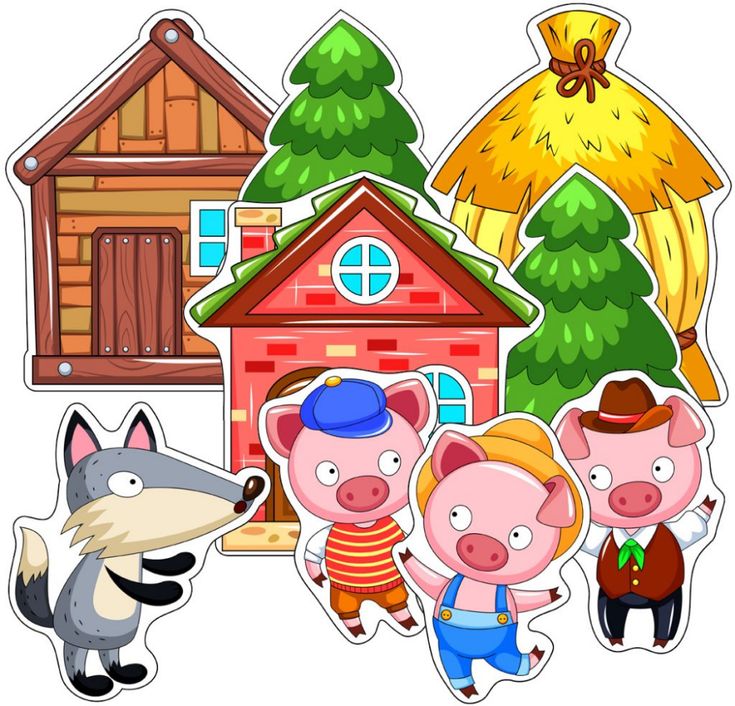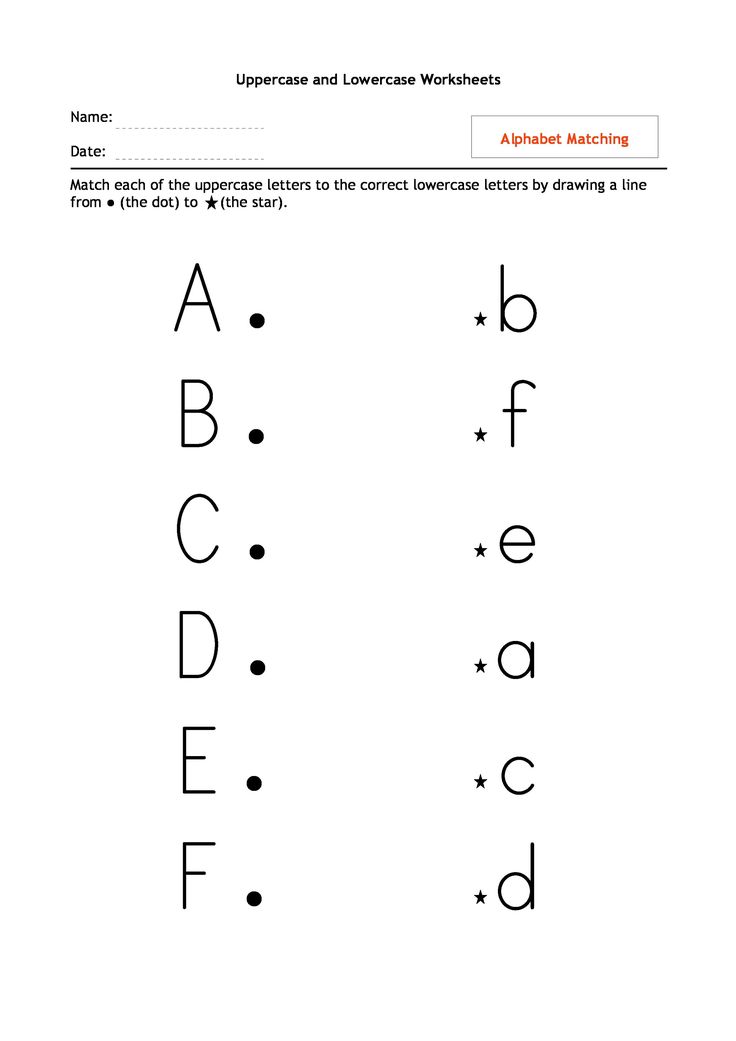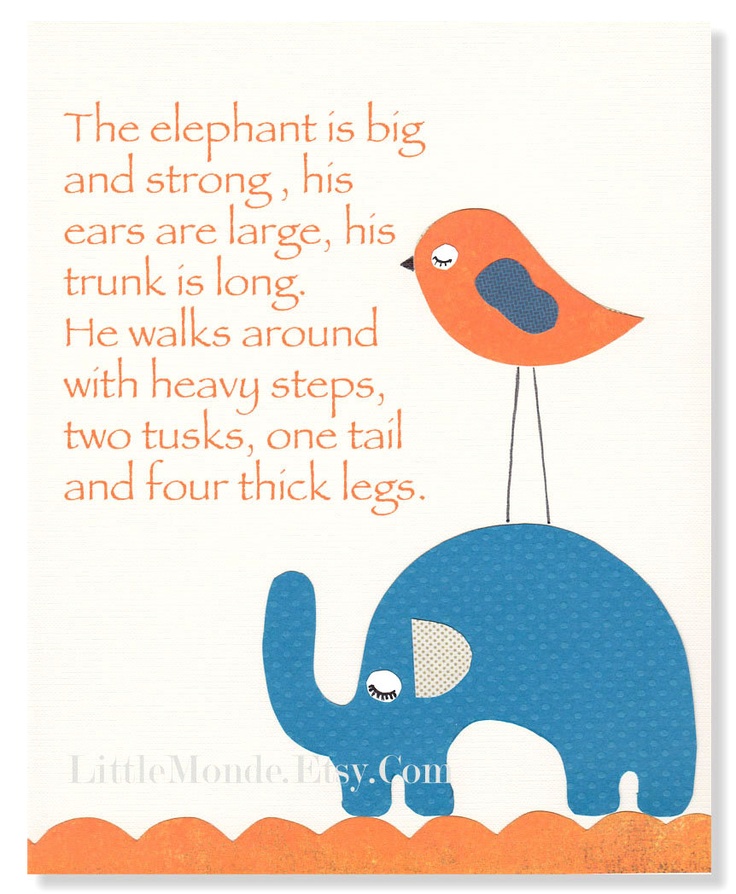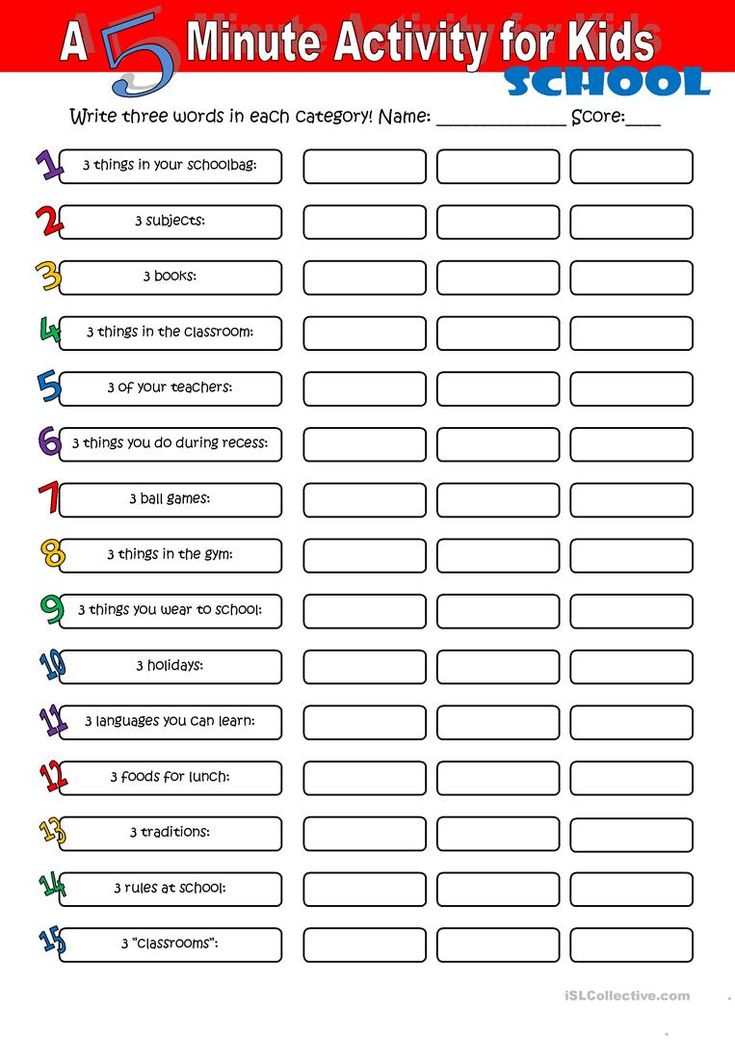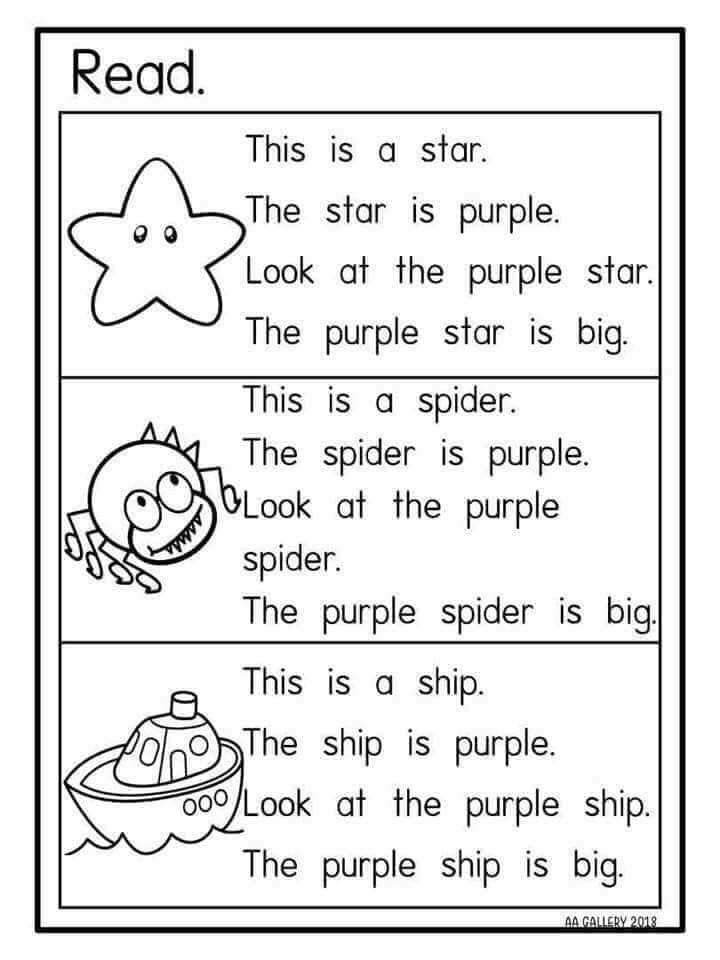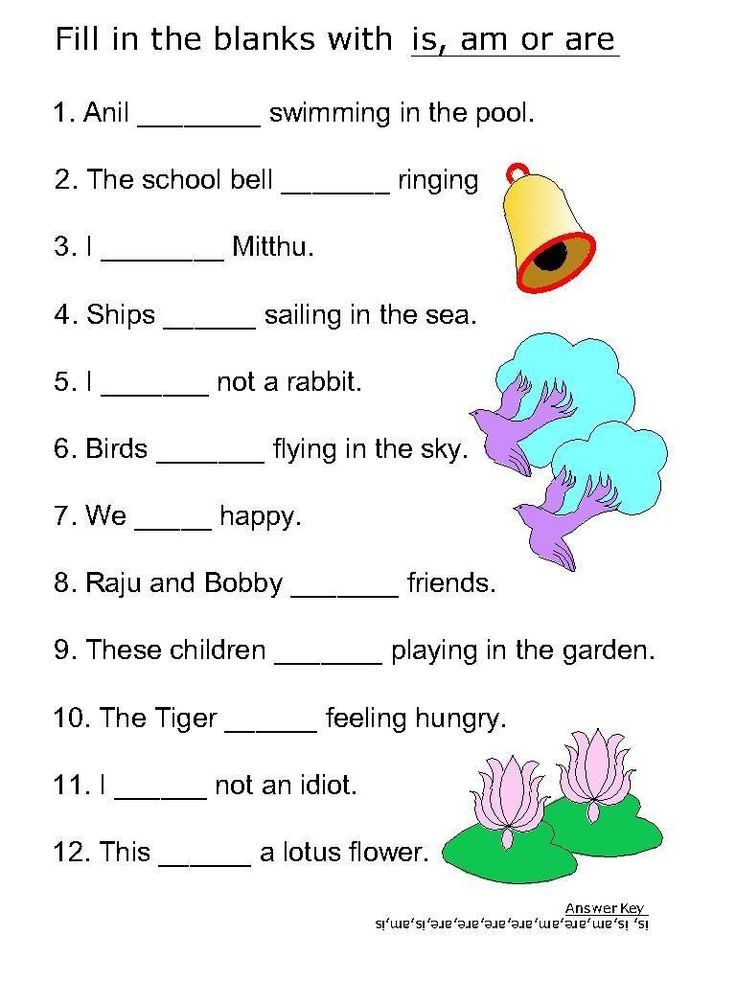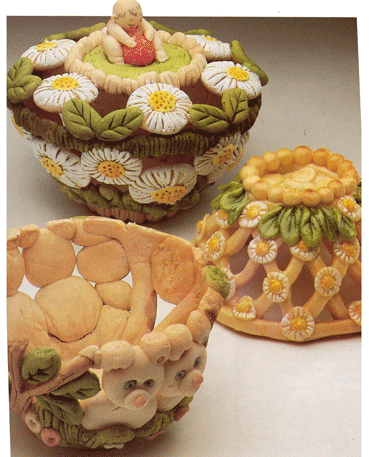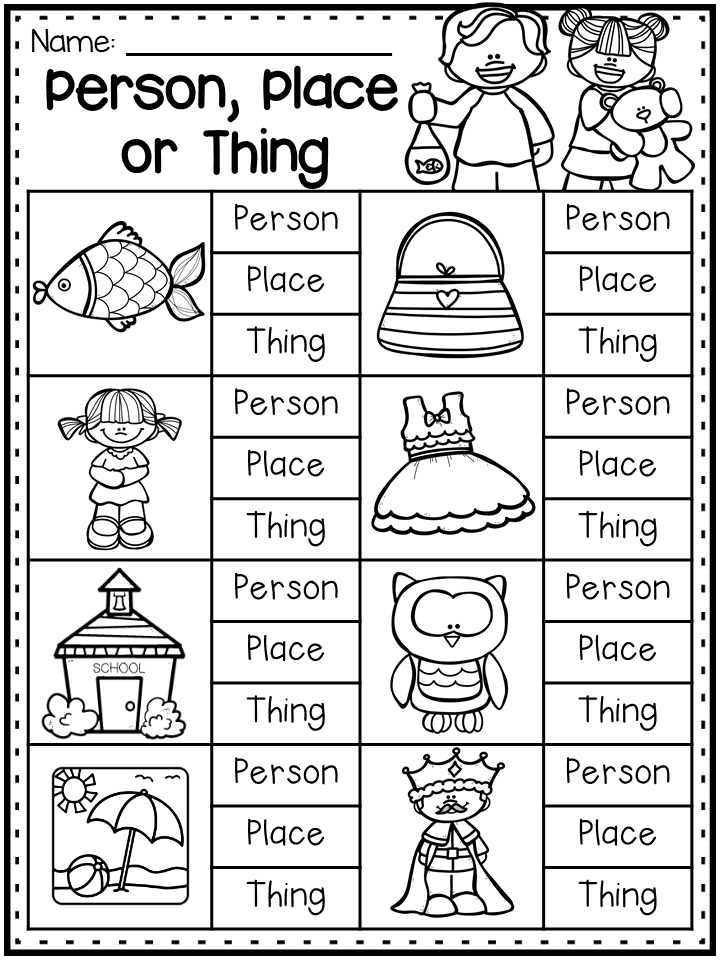Toys for learning shapes
Best gifts for teaching shapes
This post may contain affiliate ads at no cost to you. See my disclosures for more information.
Squares. Circles. Triangles. Rectangles. Shapes are literally everywhere we look, and kids need to learn them. Fortunately, learning shapes can actually be a lot of fun! (For proof that learning shapes can be fun, see this post, this post, and this post.)
Below I have complied a list of 10 of the best gifts for teaching shapes. On this list are ideas for fun and educational toys that will help kids ages 1 and up learn to identify and understand 2-D and 3-D shapes of all kinds.
Note: For more great gift ideas for kids of all ages and interests, see my gift guides page.
Fisher-Price Brilliant Basics Baby’s First Blocks
: This is a classic toy for babies, and one that begins to teach them some basic shapes. In fact, it was one of the first toys we introduced QBoy to when he joined our family through adoption at 18 months of age. With this toy, babies work to put the six shapes through the correct hole to get them into the bucket. Then they take the lid off, dump the shapes, and try again.
Melissa & Doug Shapes Chunky Puzzle: Chunky puzzles are great for babies and toddlers, who lack the fine motor skill to use more advanced puzzles. This is a perfect beginning puzzle for introducing shapes to young kids. The bright colors make this an attractive puzzle.
Melissa & Doug Stack and Sort Board: Most toddlers go through phases where they enjoy stacking items together. This toy meets that developmental need while also helping your toddler to learn about shapes. As an added bonus, your child will get sorting practice as he or she completes this stack and sort board.
Learning Resources Tangrams Smart Pack: Tangrams are a classic toy for building shape knowledge and spatial awareness. This pack includes four sets of tangrams with seven pieces each (for a total of 28 pieces in the pack).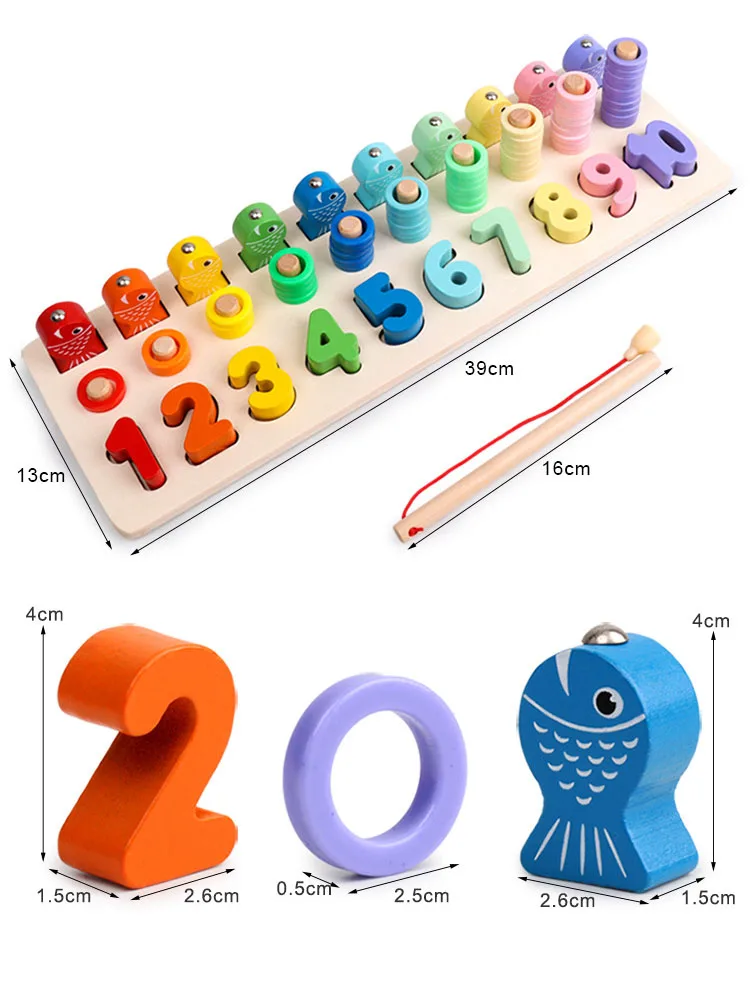 It also includes an activity guide with ideas.
It also includes an activity guide with ideas.
Magna-Tiles® Clear Colors 100 Piece Set : Magna-Tiles are probably my all-time favorite toy. We first purchased these when QBoy was two-year-old, and three years later my kids still play with Magna-Tiles on a regular basis. Magna-Tiles are awesome for teaching shapes and spatial relationships (aka, early geometry). Through playing with Magna-Tiles, kids intuitively learn concepts about angles, combining shapes to make new shapes, and how various 2-D shapes can be used to form 3-D shapes. Magna-Tiles are expensive, but they are have been well worth the investment given how much use my kids have gotten out of them.
MindWare Imaginets: Imaginets are magnetic shapes that come with a magnetic board that doubles as a carrying case. Kids can combine shapes to create pictures using the included picture cards or their imagination. This toy is great for learning shapes, geometry, and developing spatial awareness skills.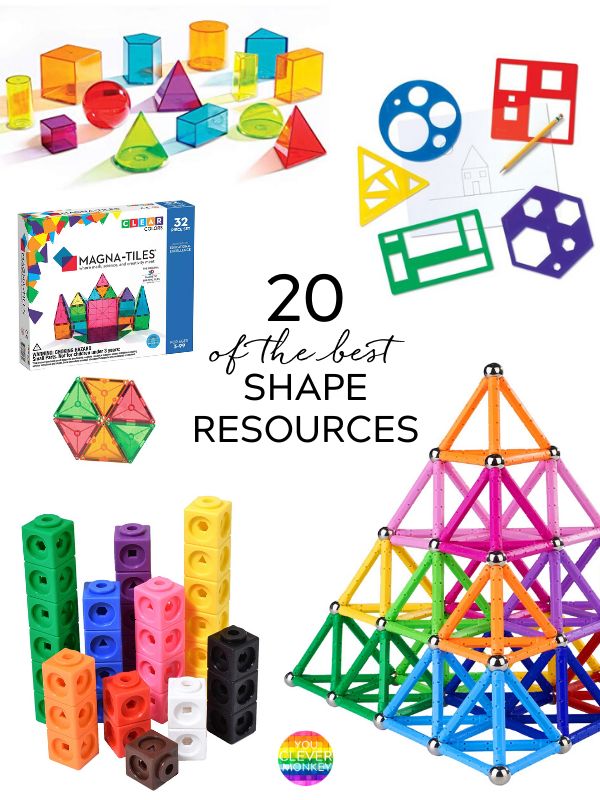
Learning Resources Wooden Pattern Blocks (Set of 250) : These wooden pattern blocks are well constructed and will provide hours of educational fun. Download free pattern block templates from Learning Resources, PreKinders or Confessions of a Homeschooler to inspire your child’s imagination and get him or her having fun with shapes. Or check out my free “How Many Ways to Make a Shape?” printable for a more advanced learning activity using pattern blocks.
Learning Resources Attribute Blocks: One of the very first learning tools I ever purchased, on the recommendation of QBoy’s early intervention specialist, was a set of attribute blocks. This set includes 60 pieces that differ along four dimensions of shape, color, size, and thickness.These are great for learning shapes (as well as learning colors and developing sorting skills). The set includes five different shapes: squares, rectangles, circles, triangles, and hexagons.
Wikki Stix Basic Shapes Creative Fun Kit
: I rave about Wikki Stix and recommend them for learning all kinds of things, including shapes. Wikki Stix are wax coated strings that you can bend, stick, and create with no need for tape or glue. They clean easily and never dry out (ours are more than two years old are still work great!). This Wikki Stix shapes kit includes a number of Wikki Stix as well as cards for making a variety of shapes and even combining shapes to make pictures.
Wikki Stix are wax coated strings that you can bend, stick, and create with no need for tape or glue. They clean easily and never dry out (ours are more than two years old are still work great!). This Wikki Stix shapes kit includes a number of Wikki Stix as well as cards for making a variety of shapes and even combining shapes to make pictures.
Learning Resources Folding Geometric Shapes: I love this set for teaching 3-D geometric shapes. Some things that make this set special include the fact that each shape opens up. Inside, kids can take out the folding colored shape and lay it flat to see how each face of the 3-D shape is made from different 2-D shapes. Kids can also fill the shapes with rice or sand to get a sense for how the volumes compare. The set includes a total of eight different shapes all about 3″ in height.
Looking for more great gift ideas? Check out my other gift guides:
- Best gifts for kids who love science
- Best gifts for kids who love to build
- Best gifts for developing kids’ fine motor skills
- Best gifts for active kids
- Best gifts for kids who love arts & crafts
- Best gifts for encouraging sensory play
- Best gifts for developing math concepts
- Best gifts for teaching letters
- Best gifts for kids who love LEGO
Toys that Teach Shapes and Colors
Toys with shapes and colors are fun and engaging for children.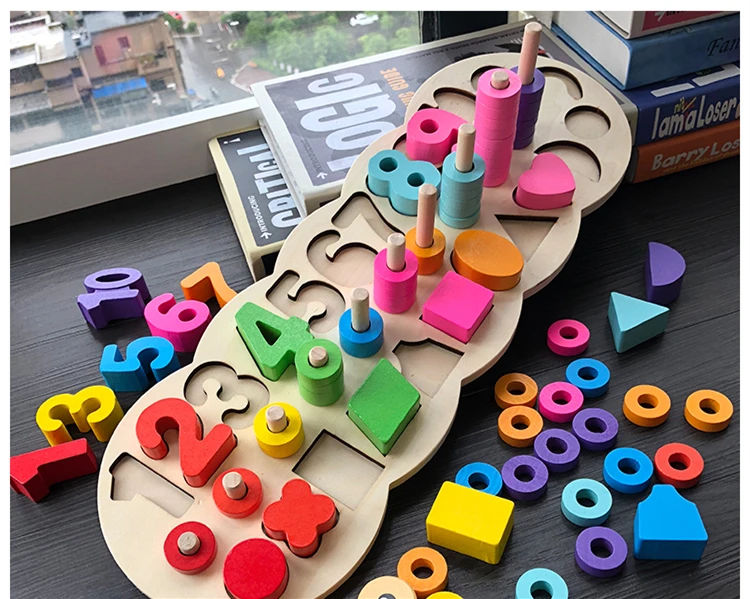 You can find these toys at any toy store or department store. They come in a variety of shapes such as circle, oval, square, rectangle, and triangle. These toys also come in different colors such as red, orange, yellow, green, blue, indigo, and violet. These toys help the child to learn shape recognition and color identification by using play time in an interactive way. We have divided toys with shapes into the following categories, alone with our picks of best toys with shapes for each category:
You can find these toys at any toy store or department store. They come in a variety of shapes such as circle, oval, square, rectangle, and triangle. These toys also come in different colors such as red, orange, yellow, green, blue, indigo, and violet. These toys help the child to learn shape recognition and color identification by using play time in an interactive way. We have divided toys with shapes into the following categories, alone with our picks of best toys with shapes for each category: Wooden Stacking Toys with Shapes
– These toys consist of big pieces for easy gripping by your child. They will also help develop your child’s motor skills. Although they come in several colors, these toys are made up of different shapes.Melissa & Doug Stack and Sort Board - Wooden Educational Toy With 15 Solid...
- Match by color and shape
- 16 wooden pieces
- Great for hand/eye coordination
Melissa & Doug Geometric Stacker - Wooden Educational Toy - Shape Sorter.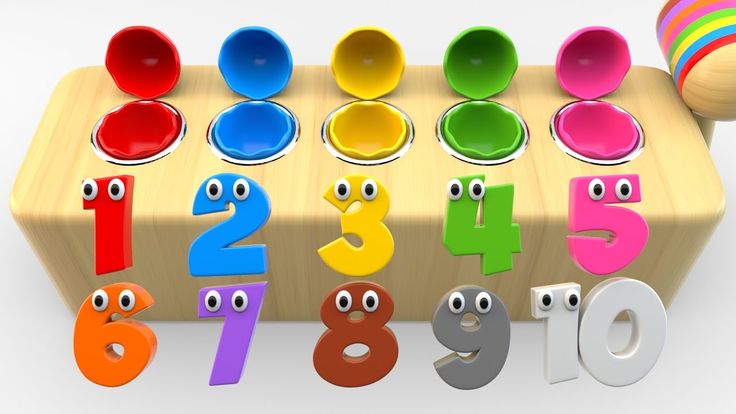 ..
..
- EDUCATIONAL GEOMETRIC STACKER TODDLER TOY: The Melissa & Doug Geometric Stacker Toddler Toy features 21 colorful wooden pieces of rings, octagons, and rectangles that can be matched and stacked on three rods.
- HIGH-QUALITY CONSTRUCTION: This geometric stacker is made from durable and child-safe materials that deliver exceptional quality and value.
- BUILDS MULTIPLE SKILLS: Our developmental toys help to build early shape, color, and size differentiation skills. Parents and children can play multiple games to help strengthen hand-eye coordination and more.
WISBABY Montessori Toys for 1 2 3 Year Old Boys and Girls ,Wooden Sorting &...
- Education and entertainment: This wooden puzzle contains 5 colors and 5 geometric shapes. You can ask your child about numbers, colors and shapes, and then try different combinations. This helps your child exercise his brain while playing. 1 2 3 year old boy and girl great toddler toy.
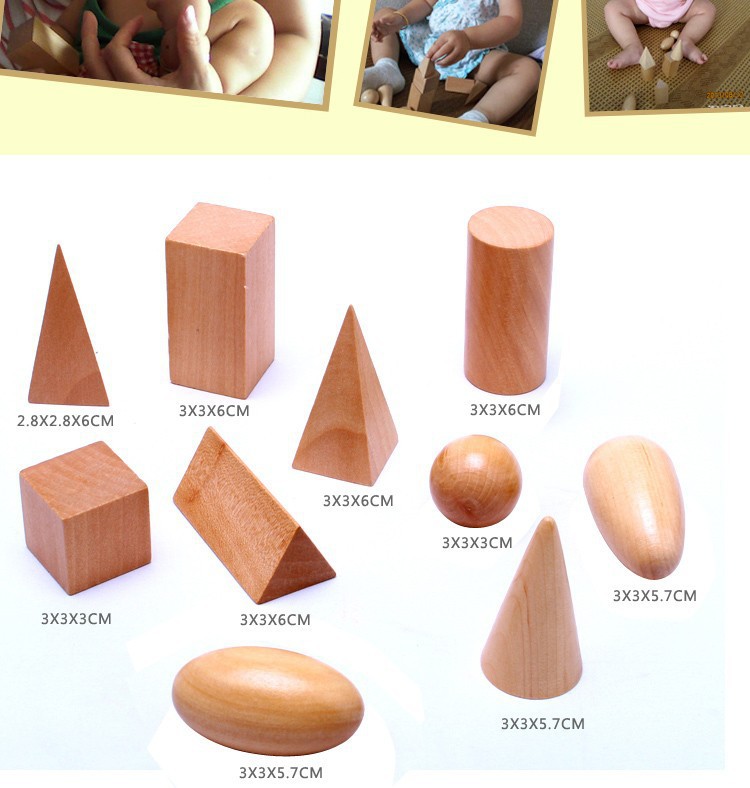
- Exercise the child's mind: the little mind is eager to grow. The interesting shape puzzles for children are very suitable for your children to learn shapes and geometric shapes, establish color recognition and exercise children's spatial concept and hand-eye coordination. An excellent educational shape toy for young children.
- Best choice for parents: Sometimes, you need to get this kind of wooden educational preschool shape color recognition geometric board. As a parent, you may hate noisy nasty toys. It’s great to have a wooden jigsaw puzzle toy that can be used for both imagination and education.
Shaped Puzzles
– These puzzles have bright colors and fun, playful designs that will attract your child’s attention. With so many types of these puzzles available, your child can learn not only the letters of the alphabet, but also proper animal sounds and vehicle noises. They can even discover how to count and how to spell his or her name. Montessori Multiple Shape Puzzle First Shapes Jumbo Knob Wooden Puzzle. ..
..
- Colorful geometric artwork, help kids to recognize different shape and changes of multiple by different color;
- Knob wooden puzzle strengthens fine motor skills, matching skills, large wooden knobs for easy grasping, and KNOBS ARE SCREWED ON;
- This wooden puzzle is designed for toddler who developed hand-eye coordination and visual perception skills;
The Learning Journey My First Shaped Puzzle - Pet Friends - Fun Shaped...
- KEY FEATURES – These friendly 2-piece puzzles are perfect for little hands to manipulate and are great for both BOYS and GIRLS ages 2 and up. Designed to enhance cognitive skills and inspire early learning, this set of four puzzles makes it fun to reach key developmental milestones. THE SPECS: Eight jumbo puzzle pieces made of thick, durable cardboard construction. Each puzzle is approximately 11.5” x 8”.
- EDUCATIONAL BENEFITS – Builds tactile, motor, thinking and learning skills.
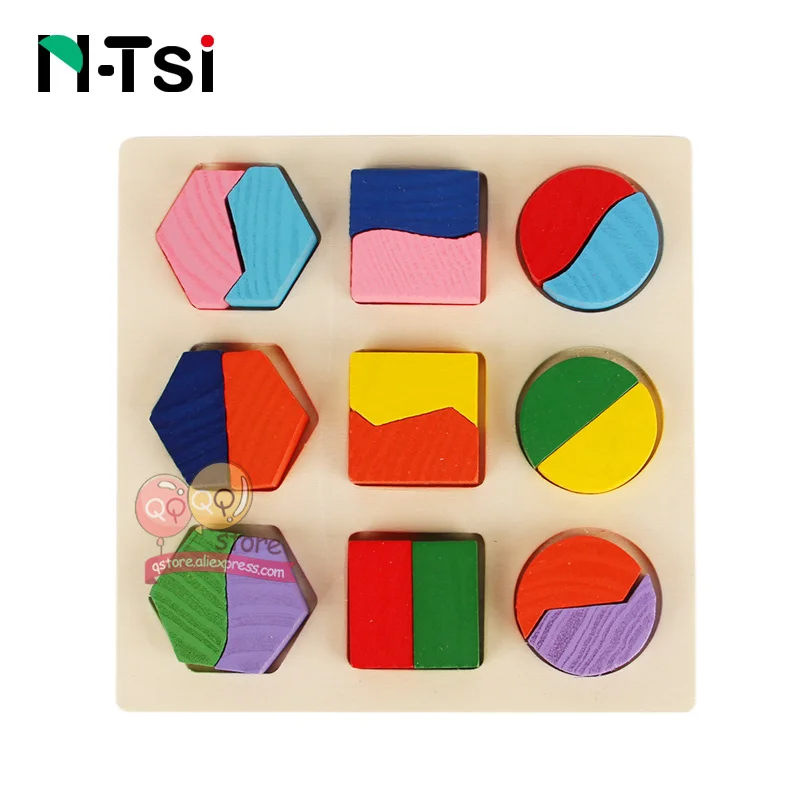 Introduces color, shape and object recognition. Builds confidence and boosts self-esteem by providing a sense of achievement. Introduces children to the world around them.
Introduces color, shape and object recognition. Builds confidence and boosts self-esteem by providing a sense of achievement. Introduces children to the world around them. - SUPPORTS DEVELOPMENTAL SKILLS – Improves FINE MOTOR SKILLS and HAND-EYE COORDINATION by requiring your child to fit the correct puzzle pieces together. Helps develop COGNITIVE abilities by encouraging your child to focus and problem-solve. Fosters visual and tactile SENSORY play. Creates a SOCIAL learning environment.
Melissa & Doug Shapes Wooden Chunky Puzzle (8 pcs) - FSC-Certified...
- 8-PIECE WOODEN PUZZLE: The Melissa & Doug Shapes Chunky Puzzle features 8 pieces of durable and easy-to-grasp wood that display bright colors, patterns, and shapes.
- CHUNKY WOODEN PIECES: To ensure tiny hands can easily grasp and negotiate each piece, our puzzle for kids is made from high-quality chunky wooden pieces. The pieces display full-color pictures beneath to offer visual clues.

- EASY TO MANIPULATE: This Melissa & Doug kids’ learning puzzle is made with pieces that can stand up to use as manipulatives or play pieces. It also encourages hand-eye coordination and imaginative play.
Garlictoys Wooden Shape Color Clock Puzzle-Teaching Time Sorting Number...
- Geometry Learning Clock: Homeschool supplies, clock puzzle toddlers, A colourful wooden clock with 12 wooden shaped number pieces that fit into matching slots, plus movable hour and minute hands rotate encouraging realistic practice.Diameter: 8.43”.
- Help Kids Learn to Tell Time: Great Montessori style learning clock toy will help children to learn how to tell and understand the time! Kids can play it as puzzle blocks,and work on shape, color and number, and most obviously, time.
- Shape Sorting Clock: A colourful wooden toy clock with 12 wooden shape blocks that fit into matching slots, plus movable hour and minute hands rotate encouraging realistic practice.
 The hour and minute hands are printed very clearly, and the hours blocks (1-12) are marked by different colors and numbers, which is very clear and easy for kids to tell, a good choice for portable travel toy, birthday present, baby show, Halloween, Thanksgiving day and Christmas gift.
The hour and minute hands are printed very clearly, and the hours blocks (1-12) are marked by different colors and numbers, which is very clear and easy for kids to tell, a good choice for portable travel toy, birthday present, baby show, Halloween, Thanksgiving day and Christmas gift.
The Learning Journey: Lift & Learn Puzzle Colors & Shapes Preschool Toys &...
- KEY FEATURES – The Lift & Learn – Colors & Shapes consists of 16 pieces to teach colors, shapes, and spelling. Brightly colored objects make it interesting for little ones to find homes for each puzzle piece and the raised textures make it easy to grab for little hands. Measures 11” long x .4” wide x 15” high, weighs 1.72 lbs.
- EDUCATIONAL BENEFITS – Promotes creativity, tactile and motor development, and thinking and learning.
- SUPPORTS DEVELOPMENTAL SKILLS – Improves FINE MOTOR SKILLS and hand-eye coordination. Builds CONFIDENCE and boosts SELF-ESTEEM by providing a sense of achievement.
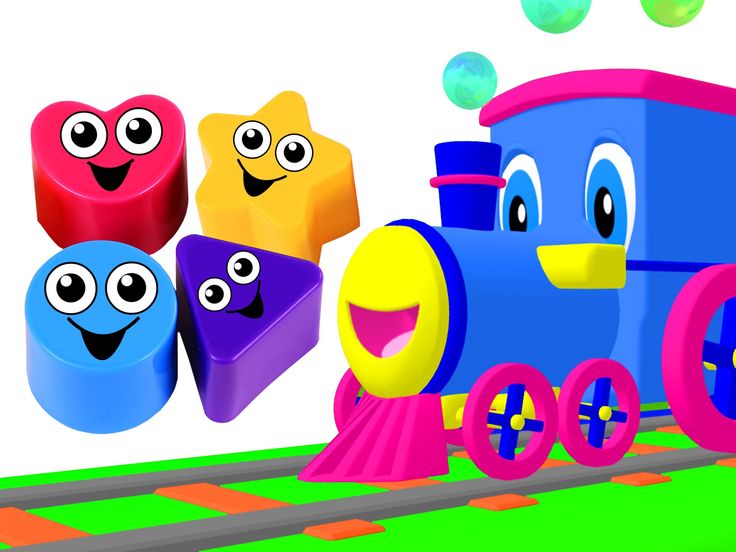 Helps develop PROBLEM-SOLVING abilities by encouraging your child to concentrate. INSPIRES creativity and reinforces word recognition.
Helps develop PROBLEM-SOLVING abilities by encouraging your child to concentrate. INSPIRES creativity and reinforces word recognition.
Shape Sorting Play Sets
– These sets include an activity for your child such as color-matching, painting, and pretend play. They are designed with bright colors and shapes to captivate your child’s imagination. With so many options available, you can choose the set that best suits your child’s talents and skills.Melissa & Doug Shape-Sorting Wooden Dump Truck Toy With 9 Colorful Shapes...
- WOODEN DUMP TRUCK & SHAPE SORTER: The Melissa & Doug Shape-Sorting Wooden Dump Truck Toy is a two-in-one entertainment and pretend play experience. It includes 9 colored blocks in different shapes and 2 play figures.
- FUNCTIONAL LIFTING BACK DOOR: Our shape-sorting dump truck features a back door that lifts while the truck bed tilts to dump blocks. Melissa & Doug developmental toys help teach shape and color recognition and promote creative play.
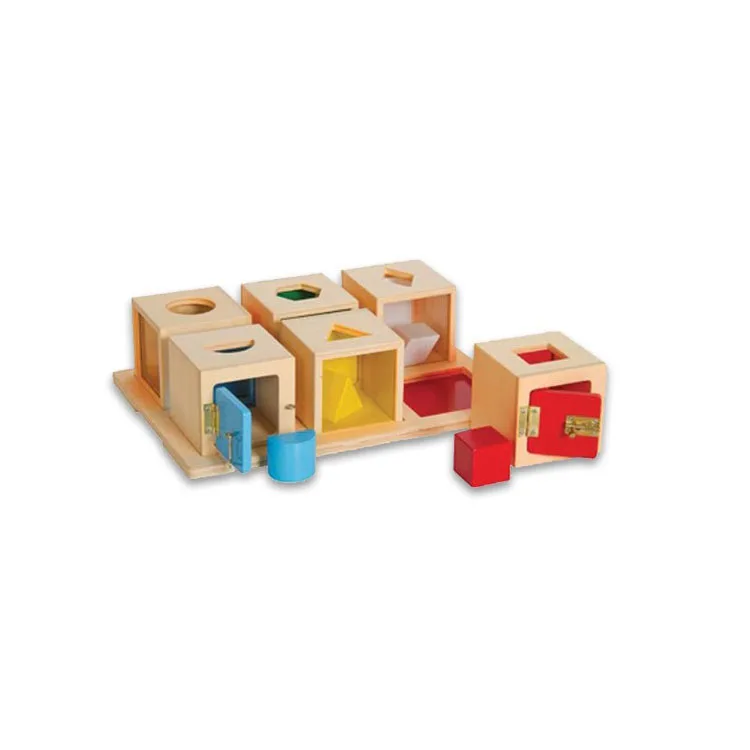
- DURABLE CONSTRUCTION: This shape sorter truck is made from high-quality materials and assembled with precision manufacturing standards, which ensures sturdy construction and holds up against frequent use.
Melissa & Doug Shape Sorting Cube - Classic Wooden Toy With 12 Shapes -...
- CREATIVE SORTING GAME FOR KIDS: The Melissa & Doug Shape-Sorting Cube Classic Wooden Toy is a beautifully constructed wooden toy with 12 bright-colored, easy-to-grip shapes.
- CLASSIC LEARNING ACTIVITY: This ever-popular shape and color activity is sure to engage children. Each shape is designed to fit through a matching hole on the wooden cube.
- STURDY WOODEN CONSTRUCTION: Melissa & Doug early development toys are made to last. This colorful toy for toddlers and preschoolers promotes color and shape recognition and problem-solving skills.
Melissa & Doug Match and Roll Shape Sorter - Classic Wooden Toy
- Melissa & Doug
- CLASSIC POUNDING TOY: The Melissa & Doug Match & Roll Shape-Sorter is a brightly colored shape-sorter featuring classic shapes such as a parallelogram, quatrefoil, square, diamond, oval, and pentagon.
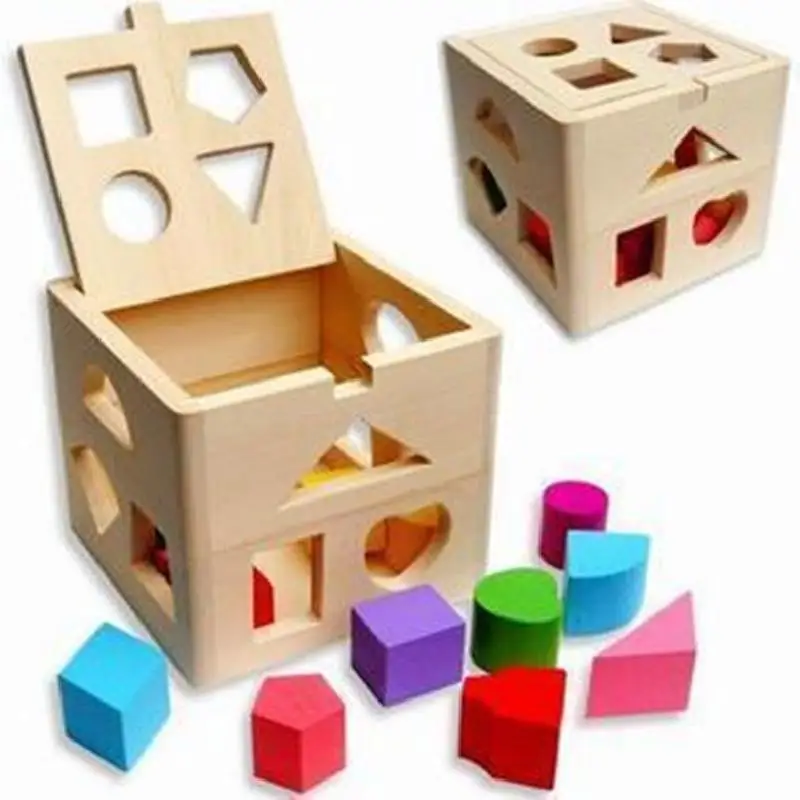
- HIGH-QUALITY CONSTRUCTION: This wooden pounding toy is made from durable and child-safe materials, which delivers exceptional quality and value, making it a top seller and a childhood favorite.
Battat – Shape Sorter for Toddlers, Kids – Wooden Learning Cube –...
- Shape Sorting Toy: Sort all the shapes into the cube, retrieve them through the opening, then do it all over again!
- 10 Shapes: This wooden shape sorter comes with 10 colorful shapes with numbers for your little one to learn and play with.
- Wooden Construction: Made of durable wood, this sorting toy has a classic look and sturdy build.
Soft Shaped Puzzles
– These puzzles also come in bright colors and playful designs that will captivate your child’s imagination. They can be used to develop hand-eye coordination, shape recognition, and spatial relationships. ProSource Kids Foam Puzzle Floor Play Mat with Shapes & Colors 36 Tiles,.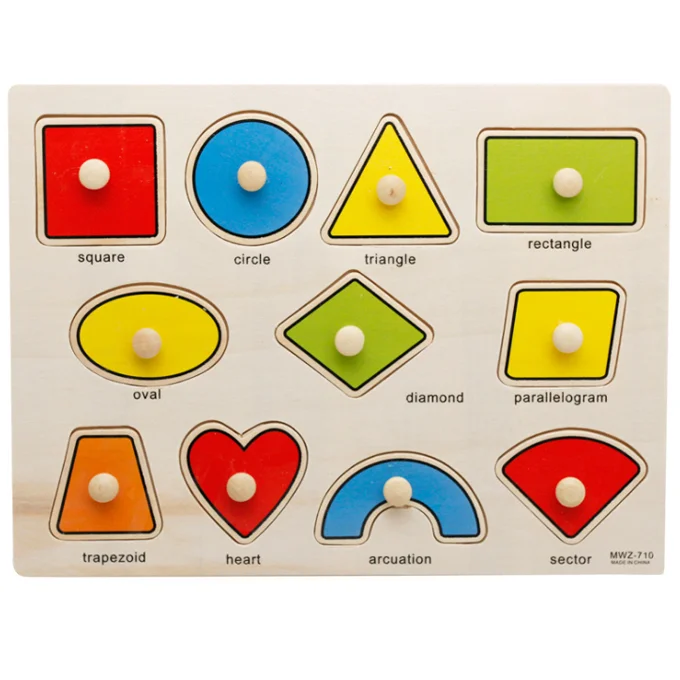 ..
..
- ABOVE STANDARD SIZE – Covers a 6'x6' area when combining all 36 interlocking 12"x12" puzzle pieces
- STIMULATING & EDUCATIONAL - Bright colors and shapes help the development of your child's early integral cognitive skills
- TOXIC FREE - Made of EVA foam free of toxic phthalates. Age Group-Infant, Toddler, Child
Shapes Rubber EVA Foam Puzzle Play mat Floor. 10 Interlocking playmat Tiles...
- 10 multi-colored foam interlocking tiles, puzzle mat with different geometric shapes. this Mat allows you to set a play area wherever you are. Aanimal and primary color puzzle pieces that help children learn shapes and colors.
- Puzzle mats tiles are easy to interlock and provide a safe and cushioned playing Surface at home. Easy to use and easy to clean – just wipe with a wet cloth. his safe playmat provides a soft, comfortable, non-slip surface
- Teaches your infants Numbers and encourages the development of children's motor skills.
 The 10 tiles create an interlocking puzzle that promotes visual sensory development, hand-eye coordination and gross motor skill development in babies, toddlers and older children.
The 10 tiles create an interlocking puzzle that promotes visual sensory development, hand-eye coordination and gross motor skill development in babies, toddlers and older children.
Lovely Garden Rubber EVA Foam Puzzle Play mat Floor. 9 Interlocking playmat...
- 9 multi-colored foam interlocking tiles, puzzle mat gardening theme and lovely insects
- Puzzle mats tiles are easy to interlock and provide a safe and cushioned playing Surface at home
- Teaches your infants Numbers and encourages the development of children's motor skills
Shaped Board Books
– These books are designed with bright colors, friendly characters, and bold shapes. The colorful pages within these books will stimulate your child’s senses while developing motor skills.I Am a Fire Truck
- Hardcover Book
- Page, Josephine (Author)
- English (Publication Language)
I Am a Garbage Truck
- Landers, Ace (Author)
- English (Publication Language)
- 8 Pages - 11/01/2008 (Publication Date) - Cartwheel Books (Publisher)
Bookscape Board Books: A Forest's Seasons: (Colorful Children?s Shaped. ..
..
- English (Publication Language)
- 10 Pages - 09/03/2019 (Publication Date) - Chronicle Books (Publisher)
Maisy's Train: A Maisy Shaped Board Book
- Cousins, Lucy (Author)
- English (Publication Language)
- 16 Pages - 02/10/2009 (Publication Date) - Candlewick (Publisher)
Shape Sorting Push or Pull Toys
– Push toys are perfect for encouraging walking in young children. They are designed with various features such as triangle-shaped wheels to create different sounds or square-shaped noses that can give your child an extra grip.Award Winning Hape Walk-A-Long Snail Toddler Wooden Pull Toy, L: 11.9, W:...
- LEARNING AND EXPLORING COMPANION: Perfect tagalong push or pull toy for your little one as they gain confidence in learning and exploring
- REMOVABLE SHAPE SORTER SHELL: Bright and colourful toddler toy. The shell features three differently shapes holes for toddlers to practice shape sorting on one side and an elastic-banded opening on the other.
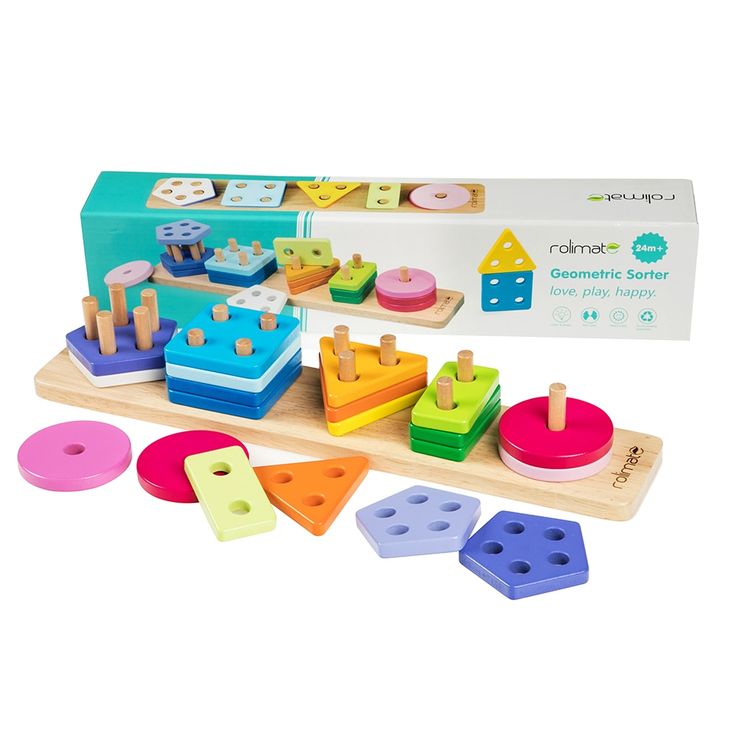 Sorter comes with a blue triangle, red cylinder and yellow square
Sorter comes with a blue triangle, red cylinder and yellow square - SAFE TO PLAY WITH: Durable and sturdy wood toddler toy, contains water-based paint and has non-toxic finishes
TOWO Wooden Pull Along Dog with Shape Sorter - Wooden Pull Along Puppy Toys...
- New improved design and quality (2018): this wooden dog is getting bigger and fatter, so it can take all the food (10 wooden shape blocks) you stuffed to its tummy. Its legs are stronger (wheels are more secured). 25.2 X 19.3 X 13 CM.
- Toddlers can take this colourful little dog for a walk while practicing their first steps. Or feed the dog while sorting the shapes and colours by inserting wooden blocks to the dog's tummy.
- The multi-functional wooden pull along dog with shape sorting adds more fun and educational learning values than other pull along toys. It is ideal for 1st birthday gifts for girls and boys; a great pull toy for toddlers to practice their first steps, learn shapes and colours, hand and eye coordination, small motor skills, concentration, problem solving and fun.
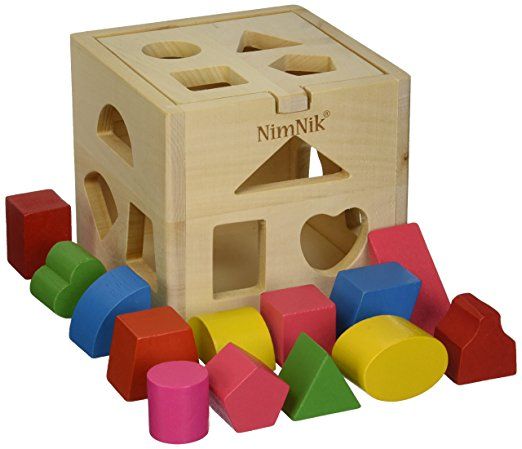
TOP BRIGHT Dump Truck Shape Sorter Toys for Toddlers - Preschool Learning...
- 360 Degree Spin - The dump truck toy for 1 2 year old boy girl is able to be spun manually to emulate a real-life concrete mixer toy truck. Push toys for 1 year old let the baby push cars or pull the trucks to the construction site and rotated. Then unloaded the wooden blocks out. It's a baby's fine motor skills toys and promote hand-eye coordination.
- Montessori toys for toddlers - This 1 year old toys includes 7 colored wooden blocks in different shapes. The wooden toys for one year old shape sorter truck allows kids to learn different colors and shapes during play.
- Learning toys for 2 year olds - This STEM toys helps teach shape sorting skills, color and shape recognition. The preschool learning toys encourages problem solving and hand flexibility. CHILDREN SHOULD BE ACCOMPANIED BY ADULT.
Shaped Building Blocks
– These blocks are designed with bright colors and fun, playful designs that will attract your child’s attention. They can be stacked on top of one another to form towers or laid out flat on the floor to create different shapes. These blocks come in different colors and shapes such as square, rectangle, circle, oval, triangle. They are great for building different structures with your child to develop spatial relationships.
They can be stacked on top of one another to form towers or laid out flat on the floor to create different shapes. These blocks come in different colors and shapes such as square, rectangle, circle, oval, triangle. They are great for building different structures with your child to develop spatial relationships. Fantasia Block Castle by Hape | Award Winning Wooden Castle Building Block...
- UNIQUE PRINTS AND SHAPES: Featuring irregular shapes and whimsical patterns, the Fantasia Blocks Castle’s brightly colored building blocks will transport children to a fantasy world
- SKILLS DEVELOPMENT: The wooden building block set’s imaginative shapes add a new level of excitement to block play, challenging children’s sense of balance, strengthening their eye-hand coordination and improving their dexterity
- INNOVATIVE BUILDING PIECES: The set includes two rattle blocks, which contain colored beads, add auditory fun to the stacking and playing
Fat Brain Toys 100 pc Block Set - Timber Blocks - 100 Piece Wooden Block. ..
..
- A CLASSIC MUST-HAVE FOR EVERY CHILDHOOD; vibrant, beautifully crafted, and wonderfully versatile
- GET A HEAD START ON SHAPE LEARNING; stack, build, get creative; build cities, characters, anything!
- PERFECT FOR AGES 12 MONTHS AND UP; made of high quality beech wood; nontoxic paint; safety-tested
The Block Set by Lovevery – Solid Wood Building Blocks and Shapes +...
- Possibly the most comprehensive block set ever designed: Science-based system of 70 heirloom-quality pieces in 18 colors, more than a dozen shapes, and a vast array of solid wood components including arches, wheels, bead threader, rolling ramp, and shape sorter, and also converts into a pull car
- The original STEM learning: Unlock STEM concepts like math, physics, and engineering, along with higher-order planning and problem-solving; spatial awareness, motor-skill development, and hand-eye coordination
- Fun activities for every stage: Loved by kids all over, The Block Set by Lovevery is designed with 20+ fun and creative learning activities that range in complexity to meet every stage of your child's growth from 18 months to 4+ years, offering years of play in one box
Shape Cars
– Cars come in all sorts of shapes such as square, oval, rectangle, and triangle. There are all sorts of colors to chooses from such as red, orange, green, blue, indigo, and violet. Young children enjoy playing with cars because they can create a wide range of racing tracks out on the floor or roadways in the living room.
There are all sorts of colors to chooses from such as red, orange, green, blue, indigo, and violet. Young children enjoy playing with cars because they can create a wide range of racing tracks out on the floor or roadways in the living room. Mega Bloks First Builders Shape Sorting Wagon with Big Building Blocks,...
- Classic colored pull wagon with a removable shape sorter plate that fits right on wagon for learning your shapes
- 25 big building blocks include 6 special shape blocks to match shape blocks to shape sorter holes and learn your shapes!
- Fold-out, easy-to-grip handle with prongs to build on
Wooden Educational Toys Wooden Shape Color Sorting Preschool Stacking...
- ❤ [EDUCATIONAL LACING BEADS]: This play set includes a police, a little boy and girl, taxi, private car, motorcycle, bicycle, police car, ambulance, bus as well as something what you can see in the city.
 These play set come with a very fashion and cute package box, so if you buy one for your kids as a gift, they will surely love it!
These play set come with a very fashion and cute package box, so if you buy one for your kids as a gift, they will surely love it! - ❤ [Safe Material & DURABLE]: Made of premium wood and non toxic safe water paint. No bad smell, no harm to people. All building blocks with smooth surface and just sized for little hands to grasp. And beads are big enough for kids, so that kids can not put them into mouth, it is safe. Good for children to play.
- ❤ [EASY TO PLAY]: These wooden toy laces via a nice sturdy wooden needle and the holes in the wooden are big enough to lace through. Children can learn how to bead the string after a few tries. Also parents can teach kids with the beads while playing.You can ask them which bead is police car, which is ambulance, and when the kids make the right answer, you can click your hands to encourage them.
Melissa & Doug Animal Stacking Cars
- RACE CAR FUN: Stack, roll, and race these three wooden cars with friendly animal drivers!
- REVVED UP: The four-inch long, brightly colored cars with art on both sides feature a clever contour that allows cars to stack in any combination.
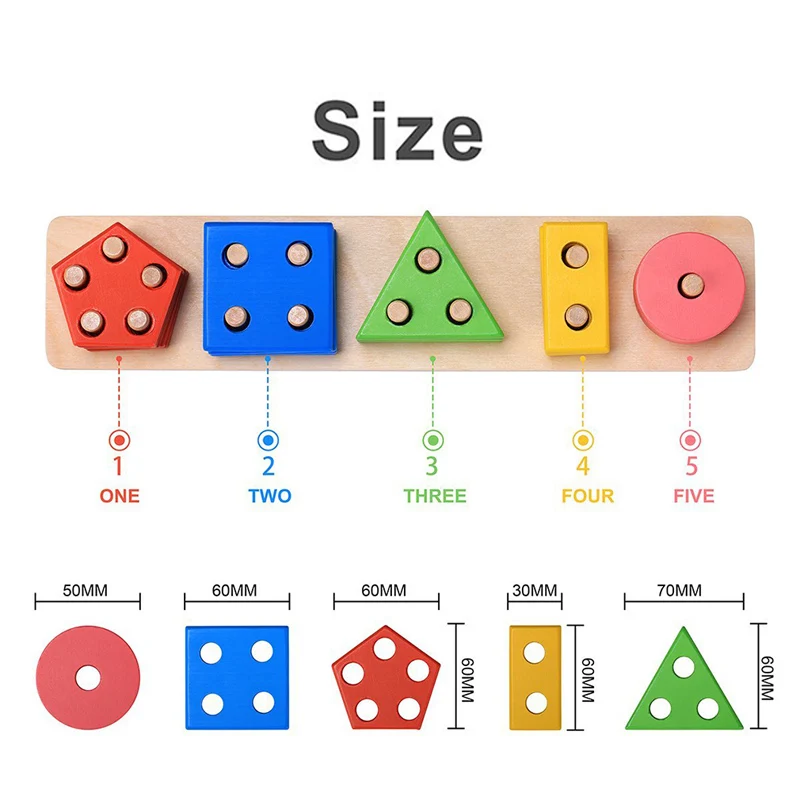
- PLAY AND LEARN: Easy-roll wheels are simple for babies and toddlers to spin. They will delight in grasping, stacking, and rolling while developing gross motor skills and hand-eye coordination through imaginative play.
TOP BRIGHT Wooden Shape Sorter Toys for Toddlers Learning Sort and Match...
- MOM’S REASSURING CHOICE: The shape sorter car is fully tested to the highest US ASTM and European EN71 toy safety standards. Choose washing paint spraying, bright colors, formaldehyde-free and other harmful substances safety and environmental protection, edge careful polishing is very comfortable children's hands, high-quality plastic wood combination, so that the car has more texture. even you buy it as a gift for 2 year old boys and girls is very safe
- ROLE-PLAYING FUN: This shape sorter car simulates the operation of the blender. The barrel can be rotated and unloaded.Give them a gift and let the 1 2 year old boy and girl understand the concept of space above and below.
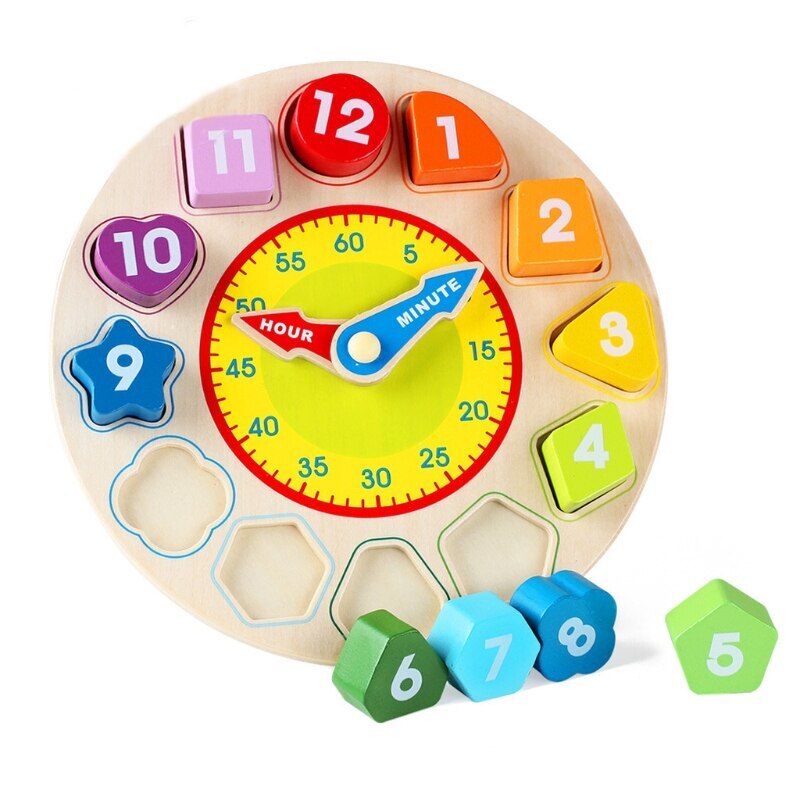 Push and pull the car, exercise the hand movements and equipped with a driver, the door can be opened, more lovely image
Push and pull the car, exercise the hand movements and equipped with a driver, the door can be opened, more lovely image - MAKE LEARNING FUN: Put different shapes into the mixing bucket. each shape makes a "crunch" sound,promot 2 year old boys and girls to recognize shapes and colors, fine motor skills and hand-eye coordination. Encourage exploration and imaginative play to immerse your child in the fun of shape sorter car!
Stuffed Toys, Animals and Dolls
– Stuffed animal toys come in various shapes that will help teach your child the names of each shape while having fun at the same time. These stuffed toy animals can also come in various colors. The dolls are designed with different shapes and colors to help teach your child about shapes while having fun at the same time. Some of these dolls can also come in various outfits that will allow your little one to learn the names of each color when dressing up their favorite dolly.GUND Cloud Pillow Stuffed Animal Plush, White and Pink, 20"
- Cloud-shaped plush pillow with a sweet smile and rosy cheeks
- Soft, huggable plush built to famous GUND quality standards
- Surface-washable for easy cleaning; appropriate for ages 1+
MerryXD Chubby Blob Seal Pillow,Stuffed Cotton Plush Animal Toy Cute Ocean.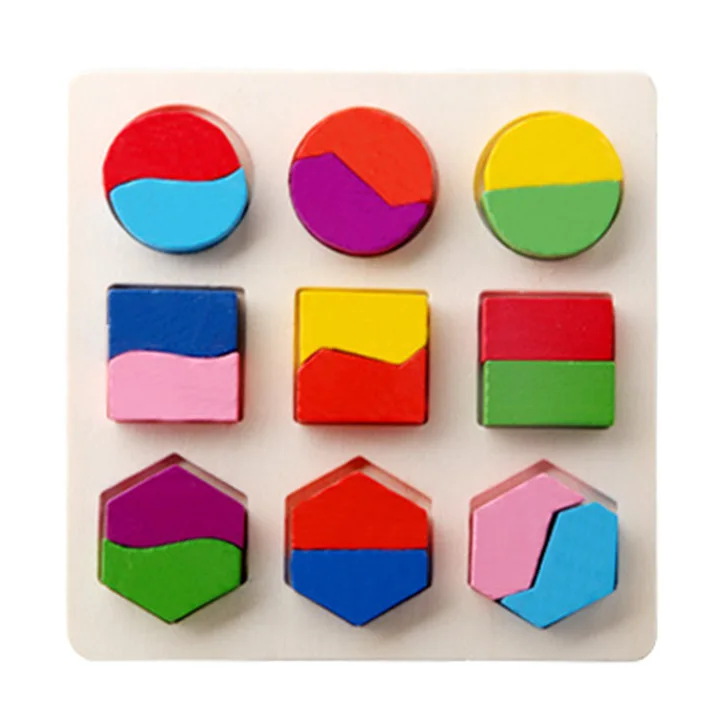 ..
..
- Pursue a simple and comfortable life, hug this lovely seal animal plush pillow, snuggling in bed or sofa, bring you a touch of sweetness and fun this winter!
- This chubby seal pillow has high-quality PP cotton filling and skin-friendly fabrics give you better skin touch feeling. Chic soft and it feels like you are hugging a cotton candy.
- This seal plush pillow toy is suited for living rooms, homes, bedrooms, offices, sofa, cars and every place you like. It's great as a sweet gift for kids birthdays, Christmas, Valentine's Day, Thanksgiving Day, Children's Day and other anniversaries.
Plush Creations Talking Plush Farm Animals for Toddlers with A Plush Barn...
- 🐮 WHAT'S INCLUDED: Plush Creations brings you a new fantastic animal plush toy set, "My Farmhouse." Our five-piece classic animal farm set comes with an assortment of 4 ultra-cute farm figures that talk and make realistic live sounds, and a plush barn stable to store all the farm animals when done playing.
 The playset includes a Plush Cow, Plush Horse, Plush Lamb, and a Plush Rooster. Get your child smiling and animated by hugging or squeezing these fluffy and squishy plush animal farm dolls.
The playset includes a Plush Cow, Plush Horse, Plush Lamb, and a Plush Rooster. Get your child smiling and animated by hugging or squeezing these fluffy and squishy plush animal farm dolls. - 🐔 INTERACTIVE & EDUCATIONAL: Just squeeze or hug the super-soft plush farm animals to hear the cutest lifelike animal sound! Each animal introduces itself and then makes the coolest real-life animal sounds! The cow makes moo, the rooster crows, the horse neighs, and the sheep bleats for easier recognition. Turn playtime into a learning moment, boost your child's confidence, and help your small kids' learn about zoo animals and pets! Great gift for infants and babies, boys or girls.
- 🐴 SIZE: These friendly huggable mini plush stuffed animals are compact, lightweight, and easy to carry along. Every individual miniature plush animal measures 5" inches in height, and the plush barn house carrier is 7 x 9 inches. It's the perfect size for your children's' little hand to carry indoor while at home or take-along on the go.
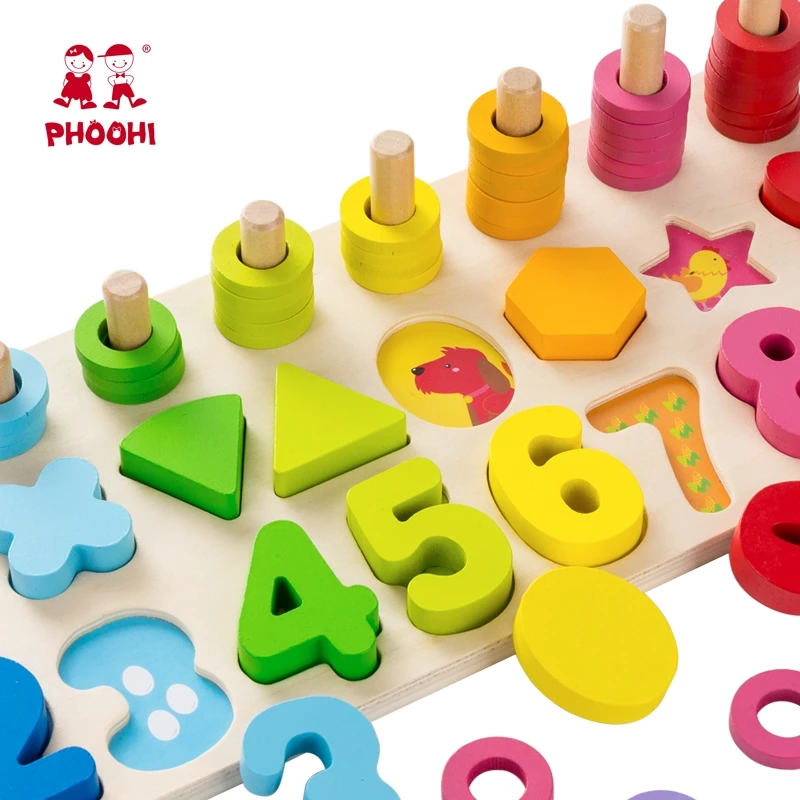 Your children will love to play with this fun, ultra-cute stuffed animal plush set. Surprise your sweet baby boy or girl with these plush farm animal toys toda
Your children will love to play with this fun, ultra-cute stuffed animal plush set. Surprise your sweet baby boy or girl with these plush farm animal toys toda
Talking Plush Rainbow & Shapes Toy Set | Includes 4 Talking Soft Shapes |...
- 💗WHAT'S INCLUDED: Plush Creations brings you a new fantastic set with different shapes, "Rainbow & Shapes." Our beautifully designed plush set comes with an assortment of 4 different vibrant shapes that introduces itself and says a fun fact! It includes a Rainbow shaped carrier that can be used to store the shapes when your child/ren are done playing. Get your child smiling and animated by hugging, squeezing, and playing with these miniature cute plush shapes!
- 🌟INTERACTIVE: Just squeeze or hug the super-soft plush shape to hear a fun fact! Turn playtime into an enjoyable moment; promote fine motor skills, engage them in creative, pretend, and imaginative play! This, “Rainbow & Shapes” set, is perfect for your kids, birthday parties, Christmas, classroom rewards, and carnival prizes! It’s an ideal holiday gift, party supply, and/or Christmas present for any plush toy lovers.

- 🟧SIZE: These friendly, huggable, mini soft and cute plush stuffed shapes are compact, lightweight, and easy to carry along. Every individual miniature plush toy looks and feels soft and cuddly; as well as the Rainbow shaped carrier dimensions are 14x8.5 inches. It’s the perfect size for your babies or toddlers to carry indoors while at home or take-along on trips and/or playdates. Your children will love to play with this fun, super cute “Rainbow & Shapes” set.
Sound and Musical Toys with Shapes
– Musical toys are designed with different shapes to help teach your child the names of different shapes while having fun at the same time. Some of these musical instruments can also come in various colors.Wooden Shape Sorter - Shape Sorter for 1 Year Old Boys & Girls - Learning...
Cute Stone Push Pull Bus Toy, Baby Musical Learning Toys with Sound &...
- Multifunctional Baby Bus Toy:The toy bus with cute cartoon design, it has fun whack-a-mole game, shape matching, gear linkage, car steering wheel, animal pairing, toy clock.
 Multiple ways to play and bring endless fun, your little one will love the bus early learning toys!
Multiple ways to play and bring endless fun, your little one will love the bus early learning toys! - Removable 2-In-1 Panel:The top panel of the bus can removabl.One side is Whack-a-Mole game and comes with 2 hammers, kids can play Whack game with their friends and parents to enhance interaction.On the other side is the design of the car steering wheel, children can simulate driving and develop hand-on ability.
- Musical Bus with Light & Sound:When Whack-a-Mole game stars, the panel will have lights and sounds. There are 8 modes in total, and press the purple switch button can switch different modes.The mole will light up, if you hit it and you will get the sounds feedback, the sound effects are different in different modes,vety interseting.
Kidoozie Lights 'n Sounds Shape Sorter (G02554)
- FULL OF SURPRISES: The Kidoozie Lights 'n Sounds Shape Sorter features six different shapes and color blocks that fit into a corresponding section.
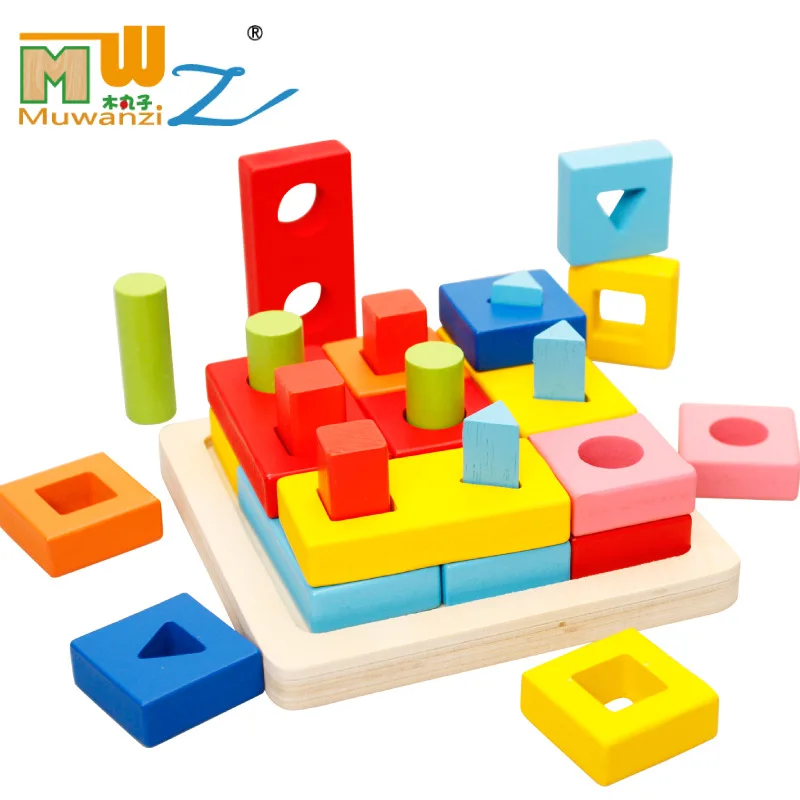 The blocks contain various surprises that your baby will love including fun textures, mirrors, rattles, and even a ball-in-the-hole block. The shapes’ bases light up as the toy plays music for even more enticing fun!
The blocks contain various surprises that your baby will love including fun textures, mirrors, rattles, and even a ball-in-the-hole block. The shapes’ bases light up as the toy plays music for even more enticing fun! - GET TO KNOW YOUR SHAPES: In early learning the Lights 'n Sounds Shape Sorter is ideal for helping children with matching. They can use the color and shape to find the correct hole for each block, to encourage spatial development. When your child is ready for the next level of challenges, turn on game mode.
- BILINGUAL BABY: They say that early childhood is the easiest time for people to learn a language, and your child can get a head starts with the Lights 'n Sounds Shape Sorter. It features an English and a French mode to help them learn their shapes!
Do-it-yourself geometric shapes games for kids. Geometric Shapes for Toddlers: Games and Educational Tools
Caring for the harmonious development of the child is the main duty of attentive parents. However, not all adults correctly approach the fulfillment of this mission. Some parents are engaged in the education of their children almost immediately after being discharged from the maternity hospital, others rely on eminent teachers and kindergarten teachers, and still others turn their treasure into a guinea pig, on which all the methods gleaned from manuals, audio materials or specialized Youtube channels are tested.
However, not all adults correctly approach the fulfillment of this mission. Some parents are engaged in the education of their children almost immediately after being discharged from the maternity hospital, others rely on eminent teachers and kindergarten teachers, and still others turn their treasure into a guinea pig, on which all the methods gleaned from manuals, audio materials or specialized Youtube channels are tested.
There is only one rule: you need to introduce your child to geometric shapes in an interesting, easy and unobtrusive way. No need to demand perseverance and attentiveness from the baby. It is better to include the acquisition of new knowledge in daily activities.
When does a baby meet geometric shapes?
There is nothing wrong with the fact that from the first months of life a child will hear from parents phrases like “and now we will take a round ball”, “let's play with a triangular toy”, “what interesting things can be hidden in a square box?”.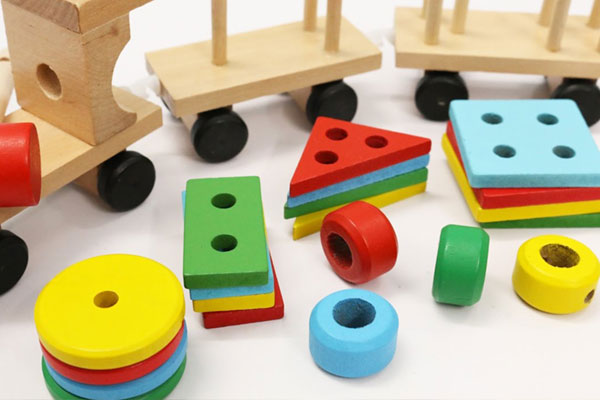 The main thing is not to impose classes on the baby and not to rush him.
The main thing is not to impose classes on the baby and not to rush him.
With the right and careful approach, by the age of two, children will be able to distinguish a triangle and a circle from a square. At the age of 3, children get to know geometric shapes even closer. They additionally study the rectangle, rhombus and oval. Preschoolers should get acquainted with the trapezoid, ellipse and other complex geometric shapes.
Why should a child learn geometric shapes?
It is difficult to dispute the benefits of early development. Active learning contributes to the formation of a harmonious and creative personality. If from an early age a child gets used to constantly learning new things, then there will be no difficulties with assimilation of information.
Why introduce a child to geometric shapes?
- Each object has a property and a form. For example, we view the landscape on the street through a rectangular window, eat from a round plate, look into an oval mirror, and so on.

- If the child masters the basic knowledge, then studying in elementary school will be an easy and exciting adventure for him.
- The study of geometric shapes will allow the baby to play games that are not available to little fidgets who do not know what it is. For example, to dance "Wider circle".
- Learning the shapes of objects helps the child expand their horizons and vocabulary.
- Mastering new knowledge is training for the brain.
However, there will be no benefit in the study of geometric shapes if the whole process is reduced to coercion, boring memorization and constant control by parents. You don’t need to spend a lot of time on one task, as kids tend to be active and restless.
5 rules for the study of figures
Remember that all information that seems elementary to us is new to children. Not every child manages to remember everything at once, without confusion in definitions. Another mistake of the baby is not a reason for anger and increased demands of adults.
Rules for the study of figures:
- Include the process of learning new things in everyday life. Give your child a book and tell them it's rectangular. At dinner, remind your baby that he eats from a round plate.
- Use toys of the correct geometric shape: cubes, balls, designer parts.
- Get feedback. Regularly ask what shape the roof of the house, the window, the wheel of the car resembles. Watch educational videos together and ask your child to retell what they heard and saw.
- Buy rectangular pastry molds and try to bake delicious cookies with your child.
- Play games where knowing the correct geometric shapes is especially useful. Ask your toddler to give you hints as you train your brain with Visual Geometry. The preschooler will be especially interested in the game " Complex Geometric Switching".
Assimilation of figures should be an exciting process that is not associated with tantrums and screams. It is important for parents to combine perseverance with a creative approach so that classes with a child do not turn into a boring duty.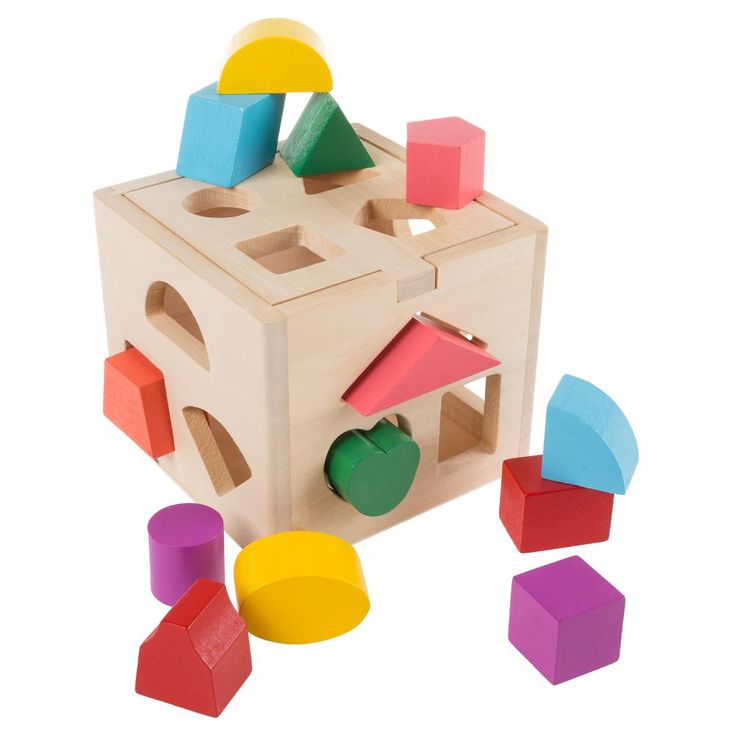
How to make geometric shapes interesting for children?
There are many ways to introduce toddlers to objects and their shapes. Let's consider the most interesting options:
- Sorter is an exciting educational toy that allows a child to learn about the properties of shapes. The peanut selects an object of the desired shape for the hole. The sorter helps the kid learn shapes, develop fine motor skills and develop logical thinking.
- A soft mosaic that even a child up to 3 years old will love. It is impossible to swallow or break its details, but it is very desirable to use them to study the figures.
- Three-dimensional stickers with the image of geometric figures, which are found everywhere by the child, will make the process of acquiring new knowledge almost imperceptible. At the same time, the result of "hidden learning" will be fixed for a long time.
- Doman cards. The use of visual materials will allow parents to quickly explain new information, and it will be easier for children to remember it.

- Specialized cartoons are the ideal home teaching tool. On the one hand, parents will be able to leave the child unattended for a while. On the other hand, the baby will gather only useful information.
- Games according to the method of Maria Montessori.
Combining the above options, taking into account the needs and interests of the baby, will definitely bring a positive result.
Montessori figure study
A child's acquaintance with forms consists of two components: the attitude of parents and the correct selection of materials. Maria Montessori invites kids to learn geometry in a playful way:
- From an opaque package or bag, a child picks up some object hidden by an adult and tries to determine its shape without looking.
- A preschooler can come up with a word-definition. For example, ask your child to name forms that can be rolled.
- Names shapes with and without corners.
- Ask the child to present their associations.
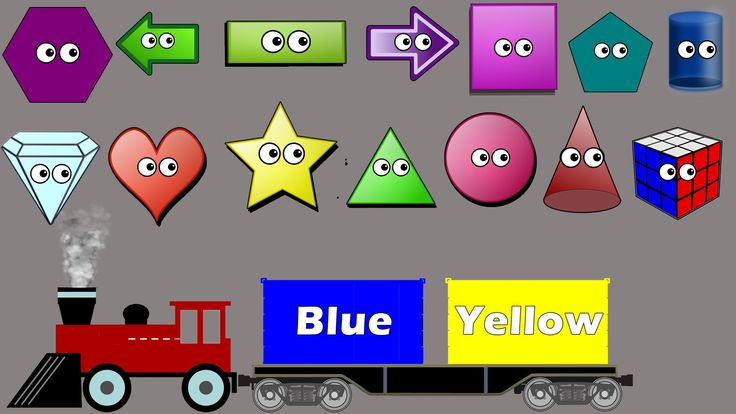 Let the baby say or draw what a triangle, circle, oval and other geometric shapes look like.
Let the baby say or draw what a triangle, circle, oval and other geometric shapes look like.
Parents can also cut out or buy stencils for their baby to trace. On the one hand, he will be able to confidently hold a pen or pencil in his hand. On the other hand, it will quickly remember the names and outlines of geometric shapes.
Do not forget the importance of drawings. When creating pictures together, do not forget to pronounce the shapes of objects. For example, "we will draw a square box containing round apples."
Geometry for a baby is an ambiguous subject, as there are many shapes, and even more ways to study them. So that the little student does not have "porridge in his head", parents should choose no more than 5 teaching methods, which will alternate from time to time. The process of learning the figures should not last longer than 10 minutes in a row, as the baby will quickly get tired and will often get confused. Fighting fatigue will not bring anything good to either an adult or a child.
So that geometric figures do not become scary monsters for children, you should not immediately talk about all possible shapes. Start with a circle. Draw it with your finger on the baby's palm, tell him about the warm sun, pay attention to the shape of the plate at dinner. When the baby easily remembers what a circle is, proceed to the study of another figure. For example, tell a little fidget about a square box. Always compare familiar geometric shapes with new items you bring for the kids. A constant return to this topic will help the adult to understand what forms of objects the baby remembers well.
Every child is a genius. The main task of the parent is to help him recognize and recognize this. In the first years of life, the child is ready for an intellectual feat, so adults need to gently and gently contribute to the development of his natural abilities. Make the process of getting to know geometric shapes creative and interesting. Do not demand the impossible from a child! Always give him room for imagination.
Modern manufacturers of products for children and child psychologists offer to engage in the development and education of the child almost immediately after his birth. It is up to parents to decide which methods to use, but some basic concepts should be explained outside the main program. for kids, colors and names of basic household items are no less important. How to introduce a child to circles and ovals?
Why do preschoolers need geometry?
The concept of shape and size helps to perceive the surrounding world and objects, to compare them with each other. You will not hesitate to say, describing some unusual piece of furniture, that it looks like two rectangles with rounded edges. Now imagine how difficult it is to describe and compare some objects without knowing the names and concepts of simple shapes. That is why it is useful to learn geometric shapes for kids as early as possible. By the age of 2-3, the child should know at least a circle, a square, a rectangle, a triangle, a rhombus.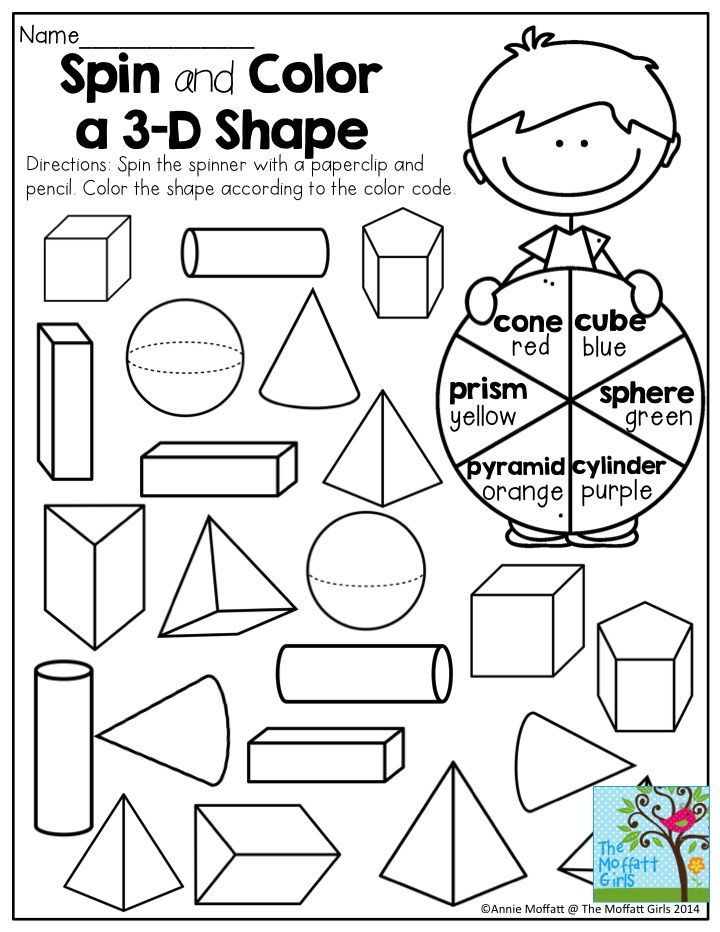 Gradually, more complex shapes can be added.
Gradually, more complex shapes can be added.
Let's go in search of figures!
The easiest way to teach a child is to play. Try to interest the baby, present new material in an original playful way. For the smallest, you don’t even need to organize classes, you can study in between times. Explain that the cup is round and the book is rectangular. A visual aid that reveals the concept of "geometric shapes" for kids will be the most ordinary toys. Match cubes and balls together, make the task more difficult by adding dishes or fruits to play in the store. Older children can be kept busy for a long time by asking them to find as many circles or triangles in the room as possible. Help show all the imagination and explain that the figures can "hide" on the fabric or wallpaper in the form of a pattern, represent a whole object or part of it.
Fun geometry
Learning 5 geometric shapes is much easier if you draw them yourself. Offer the kid a creative task, take a sheet of paper and paint, pencils and felt-tip pens and draw a circle, rectangle, square, triangle and rhombus.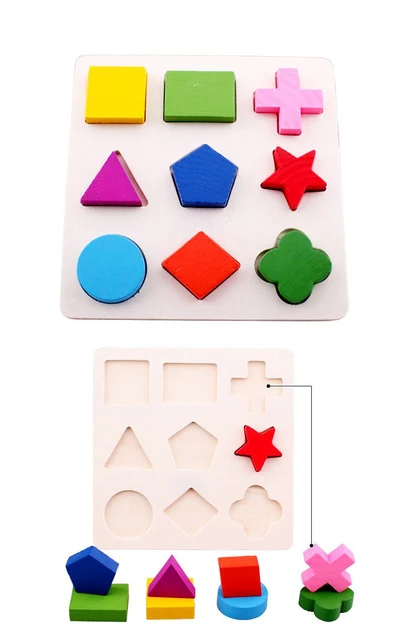 A more interesting version of this game - the mother draws a geometric figure, and the child draws some elements, turning the form into an object or animal. You can also draw a rectangle on a sheet of paper and hang it in a conspicuous place. Of course, some of your guests will be surprised by such an interior decoration, but you can always answer: “We are learning geometric shapes with kids.” The next day, draw a circle and hang it next to the rectangle. And then offer to compare the figures with each other. Gradually add the rest of the forms and be sure to devote a few minutes a day to this training.
A more interesting version of this game - the mother draws a geometric figure, and the child draws some elements, turning the form into an object or animal. You can also draw a rectangle on a sheet of paper and hang it in a conspicuous place. Of course, some of your guests will be surprised by such an interior decoration, but you can always answer: “We are learning geometric shapes with kids.” The next day, draw a circle and hang it next to the rectangle. And then offer to compare the figures with each other. Gradually add the rest of the forms and be sure to devote a few minutes a day to this training.
Useful toys for learning shapes
A variety of games and toys will help you learn the basics of geometry. The easiest option is to purchase ready-made cards with figures. Usually such sets are focused on the study of form and color. There can be many cards, the figures on them are repeated, but differ in size and shade. You can play with this board game for hours.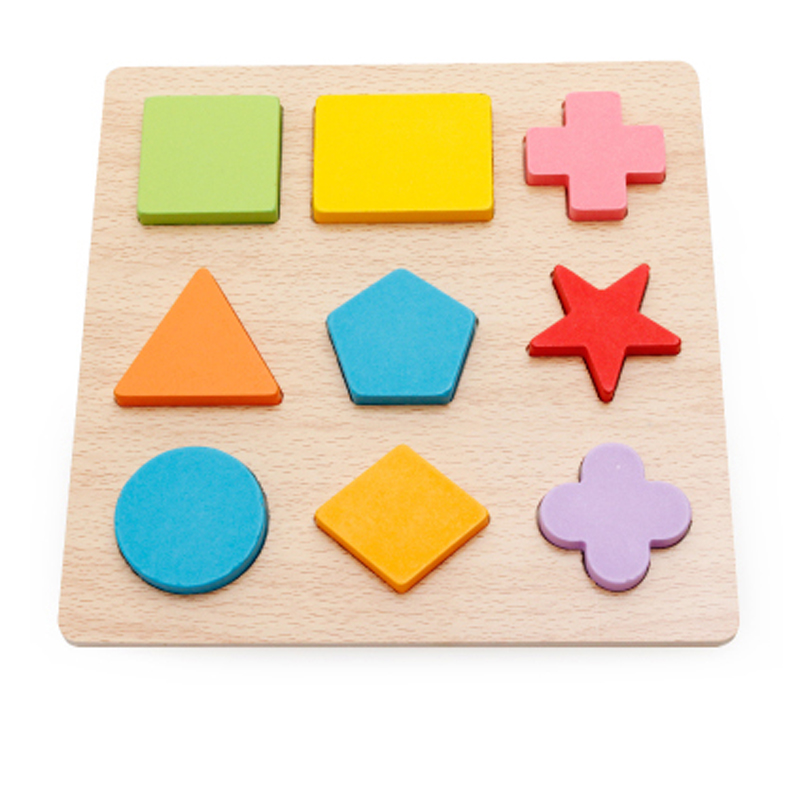 Ask to collect all the same shapes, then arrange them by size. Then mix the cards and offer to find all the shapes of the same size or color. If desired, such a game can be made with your own hands. A special children's lotto can also help in the study of geometry. If desired, it is not difficult to find such a game dedicated to figures. And yet, sorters remain the most popular geometric toys. Usually this is some kind of base (container, frame) that has slots of various shapes. Colored geometric shapes are inserted into the holes. The task of the child is to choose the appropriate slot for each small object on the base. Sorters come in a variety of styles, but by choosing the simplest - geometric, you get the opportunity to learn the names of the shapes as they are placed in the base. Wooden or cardboard frames with inserts, made according to the principle of a sorter, can also help in the study of forms. It is also useful to watch special educational cartoons about geometric shapes for kids.
Ask to collect all the same shapes, then arrange them by size. Then mix the cards and offer to find all the shapes of the same size or color. If desired, such a game can be made with your own hands. A special children's lotto can also help in the study of geometry. If desired, it is not difficult to find such a game dedicated to figures. And yet, sorters remain the most popular geometric toys. Usually this is some kind of base (container, frame) that has slots of various shapes. Colored geometric shapes are inserted into the holes. The task of the child is to choose the appropriate slot for each small object on the base. Sorters come in a variety of styles, but by choosing the simplest - geometric, you get the opportunity to learn the names of the shapes as they are placed in the base. Wooden or cardboard frames with inserts, made according to the principle of a sorter, can also help in the study of forms. It is also useful to watch special educational cartoons about geometric shapes for kids. Combine all the proposed training options, and then your child will not have problems with geometry.
Combine all the proposed training options, and then your child will not have problems with geometry.
Studying geometry with young children is quite a fun process, because at this age they gain experience and replenish their existing knowledge. And the study of figures also helps to develop thinking and memory. How to correctly “present” geometric shapes to children 3-4 years old?
We act in stages
So, geometric figures are important for the development of children. For their development to be successful, it is worth using the following rules.
- Let's start with the simplest figures (these will be circle, triangle and square).
- At the initial stage, it is better that all the figures are of the same color and size, so as not to distract the baby with unnecessary details.
- We remember the age (at 2 years we master only the circle, square and triangle; by 3 years we add an oval, rhombus, rectangle; by 4 - a trapezoid, a star, five- or hexagons).

- Education should be multifaceted so that the child constantly reinforces the acquired skills (we trace the shape with our fingers, learn to find shapes around and distinguish them, sort them by type, size, create and analyze applications, sculpt, cut, play with cards or loto, fix shapes in active games).
Start studying with flat images, gradually showing the child the difference between a plane and a volume, teaching to compare a three-dimensional geometric body with its planar image.
How to start studying?
To begin with, you can introduce the child to the image of a circle: circle your fingers, tell what it is. In a day, start looking around yourself for everything that reminds him. If the baby is at a loss, parents should help him. The following figures are studied in a similar way.
Then explain to the child that three-dimensional figures are similar to flat ones (a square looks like a cube, a circle looks like a ball).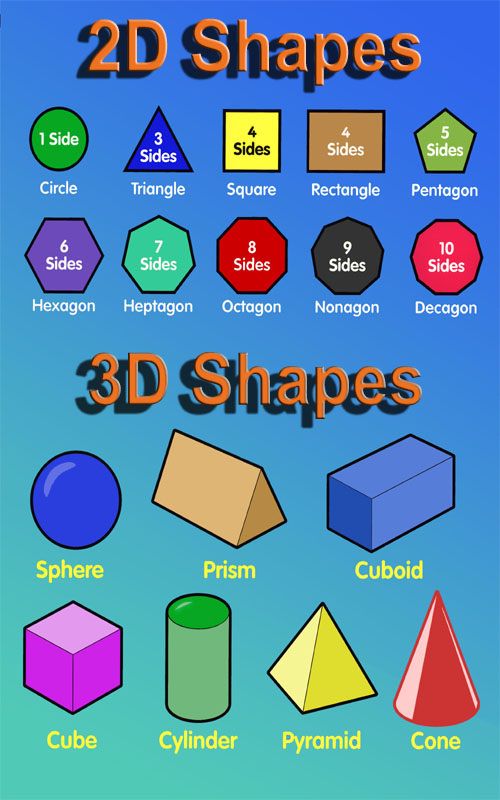 Let him try to correlate them, finding analogies around him. To do this, it is useful to show the baby a flat image, asking them to get the same object from the bag, but voluminous, and also to look for “hidden” figures while walking, reading books or watching cartoons.
Let him try to correlate them, finding analogies around him. To do this, it is useful to show the baby a flat image, asking them to get the same object from the bag, but voluminous, and also to look for “hidden” figures while walking, reading books or watching cartoons.
A special “geometric” loto helps to consolidate the acquired knowledge: cards with geometric shapes that need to be placed in places on the game map. Lotto can be made independently. To begin with, the cards are taken in one color. Later, you can add other colors - it's harder to find the right pair.
This is also facilitated by tactile recreation of a given form: drawing, modeling, laying out from different objects, cutting, mosaic, appliqué. As more and more new figures are mastered, applications can become more complex: not just squares on a square sheet or circles on a round one, but whole pictures consisting of different figures. When creating them, you need to say which figure will serve as which part of the composition (the circle - the sun or the wheel, the triangles - the Christmas trees, the roof, etc.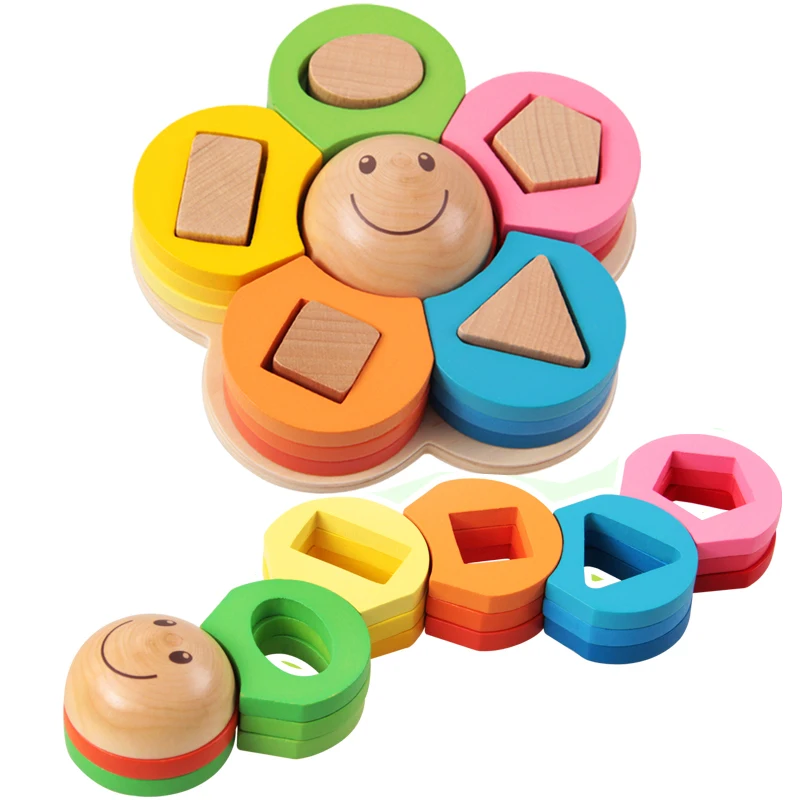 ).
).
Improve and consolidate
The study of geometric figures for preschoolers closer to 4 years should be constantly becoming more complicated. For example, the baby should already learn to distinguish figures in shape and size, as well as in the actions that can be performed with them (roll, fold into a tower). A little later, he will learn to sort geometric bodies according to two criteria (which geometric objects can be rolled, but cannot be stacked on top of each other, or which objects cannot be rolled, but can be built into a turret).
It is useful to consolidate the acquired geometric knowledge in the form of active play activities, during which the child must move along a certain trajectory (go around a circle, crawl around a square, "jump" a triangle drawn on the asphalt). Then, when such games are mastered, they are complicated (to pass, holding a spoon with a ball in their hands, to run, driving a ball along the ground).
All this will help him to prepare more fully for school, develop memory, spatial and logical thinking.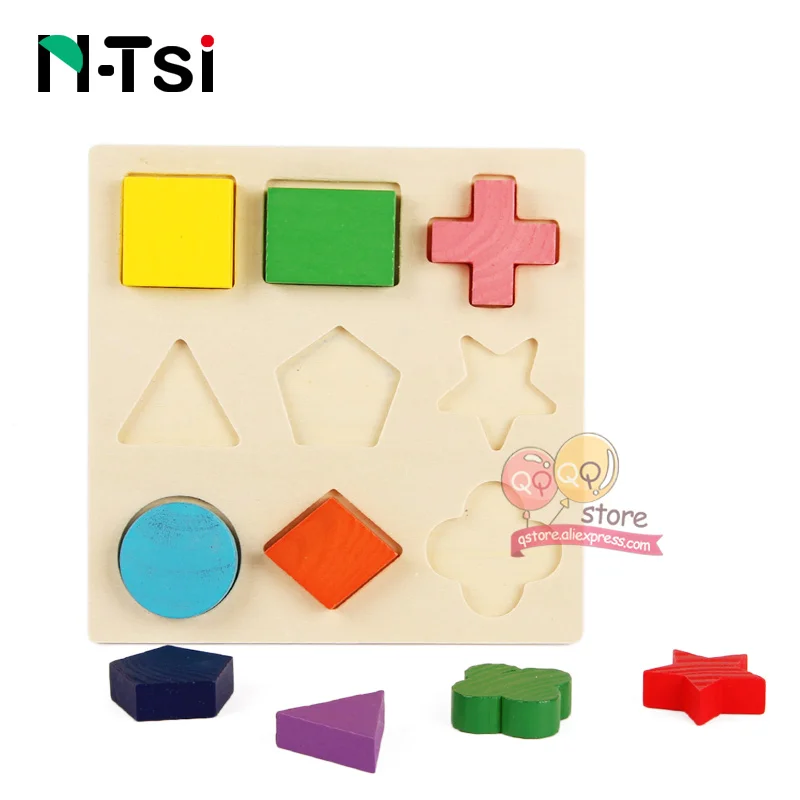 The main thing is to engage with the child systematically.
The main thing is to engage with the child systematically.
Why teach a small child geometric shapes? Surely, many parents do not even think about this issue, simply paying tribute to fashion and teaching mathematics to the baby almost from birth. Meanwhile, geometric shapes for children, their timely study play a big role in the knowledge of the environment, introducing one of the main properties of objects - shape. This is necessary for the development of logical thinking, spatial representations, and the improvement of mathematical abilities. That is why it is important to start getting acquainted with geometric shapes as early as possible, reinforcing the knowledge of the children with exciting tasks in everyday life.
What a child should know about geometric shapes
Important: Geometric figures - common standards, measures for measuring the shape of objects. Therefore, the home familiarization of the child with the forms should not take place separately, but in the system of sensory (sensual) education. Best of all, the baby will remember the shape when he simultaneously considers the color, size, purpose of the object, since knowledge is actively used in a variety of activities and is better remembered.
Best of all, the baby will remember the shape when he simultaneously considers the color, size, purpose of the object, since knowledge is actively used in a variety of activities and is better remembered.
Learning geometric shapes with kids: basic rules
Important: How to teach a child to name and distinguish geometric shapes quickly and easily! To do this, you need to follow certain rules. With chaotic, inconsistent learning, the baby can confuse the figures, not see their similarity and difference.
Riddles in verse
I have no corners and I look like a saucer, a plate and a lid, a ring and a wheel. Who am I, friends? Name me (circle).
He is a friend of mine for a long time, every corner in him is straight. All four sides are the same length. I am glad to present it to you. What is his name? (square).
Look at the figure and draw in the album, three angles, connect three sides together. It turned out not a square, but a beautiful one (triangle).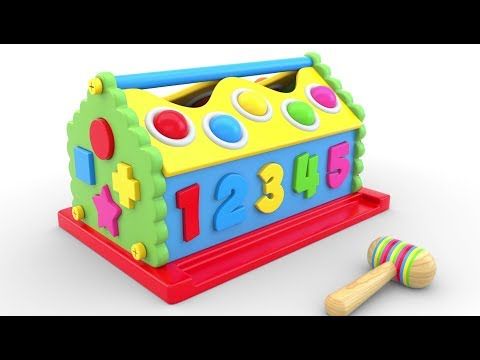
There is such a circle - a very strange appearance. The circle became flattened, it turned out suddenly (oval).
We stretched the square and presented it at a glance. Who did he look like or something very similar?
Neither brick nor triangle - became a square (rectangle).
Fairy tale "Two brothers" (an adult draws to the rhythm of the verse)
A long time ago in a dark forest in a figured hut there lived two brothers, two squares. And they were twins. See for yourself:
See in the picture - each has 4 sides, 4 corners and 4 tops.
Somehow the first square was walking among the bushes, knocking on the path with four corners.
And the animals say: “Who is this? The first square or its brother, the second square? How similar they are!
Remember in the picture: 4 sides, 4 corners and 4 tops.
The square is tired of being confused with his brother, and he decided to change, to turn into another figure.
He took scissors and cut off four corners for himself.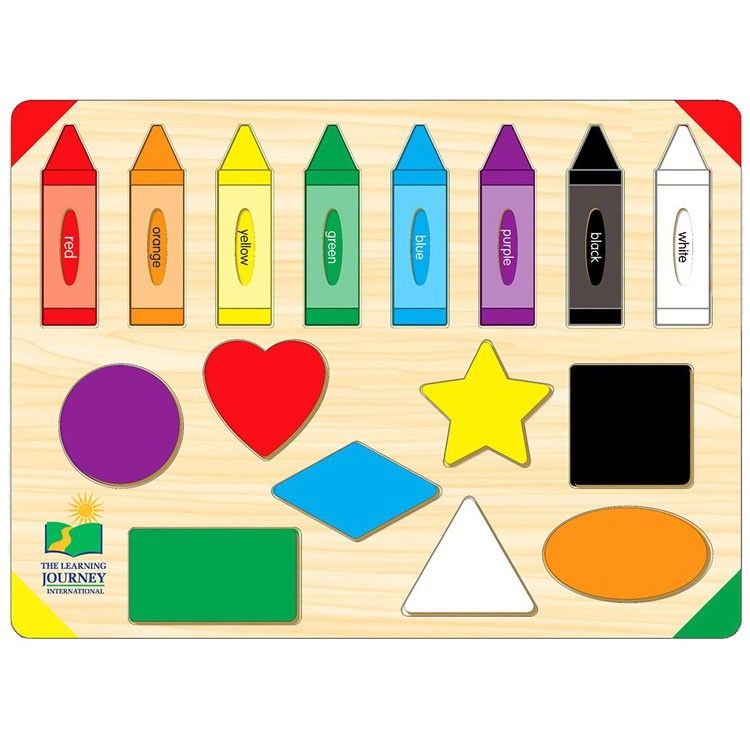 Turned into a circle and rolled along the path.
Turned into a circle and rolled along the path.
And now the brothers live wonderfully, now it is difficult to confuse the brothers:
One rides along the paths, the other walks on four corners - four legs.
Two brothers are still friends - a circle with a square!
Important: Features of children's perception of geometric figures are not at all the same as in adults. For example, an adult sees objects according to their shapes (a saucepan is a cylinder, a window is a rectangle). The child, on the contrary, first objects the shape (a square is a kite, a triangle is the roof of a house, a circle is a ball, several circles are glasses, beads). With proper training, he begins to abstract from objects and perceive a familiar figure in the environment, for example, a glass as a cylinder (cylindrical), a roof as a triangle (triangular), a ball as a ball (round).
Playing with geometric shapes!
Teachers remind that preschoolers receive basic knowledge about geometric shapes in kindergarten, and homework is aimed at consolidating what they learn.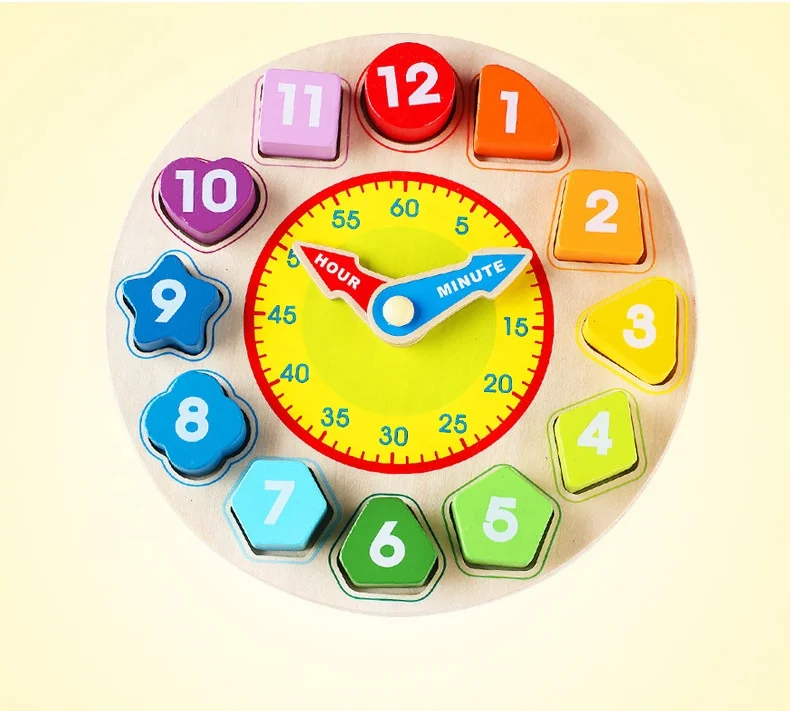 Therefore, the best means at home will be the game, as the main activity of the kids. It is in the game that, unobtrusively, easily and quickly, the child will learn all the names of the figures, learn to compare and distinguish them. Among educational games for learning geometric shapes, board games are the most popular. They can be played in the evenings, during family leisure, made part of any home activity, entertainment.
Therefore, the best means at home will be the game, as the main activity of the kids. It is in the game that, unobtrusively, easily and quickly, the child will learn all the names of the figures, learn to compare and distinguish them. Among educational games for learning geometric shapes, board games are the most popular. They can be played in the evenings, during family leisure, made part of any home activity, entertainment.
"What's Hidden"
The classic game is understandable and accessible even to a two-year-old baby. An adult lays out images of familiar figures in front of the child: a circle, a square, a triangle. Since there must be at least five cards, figures of different colors and sizes are used for the quantity, for example, two squares - large and small, two triangles - blue and yellow, one circle. Consider them with the child, discuss, make sure that he understands what figures are in front of him and can name them correctly. Then the baby closes his eyes, the adult hides one of the figures and asks what is hidden.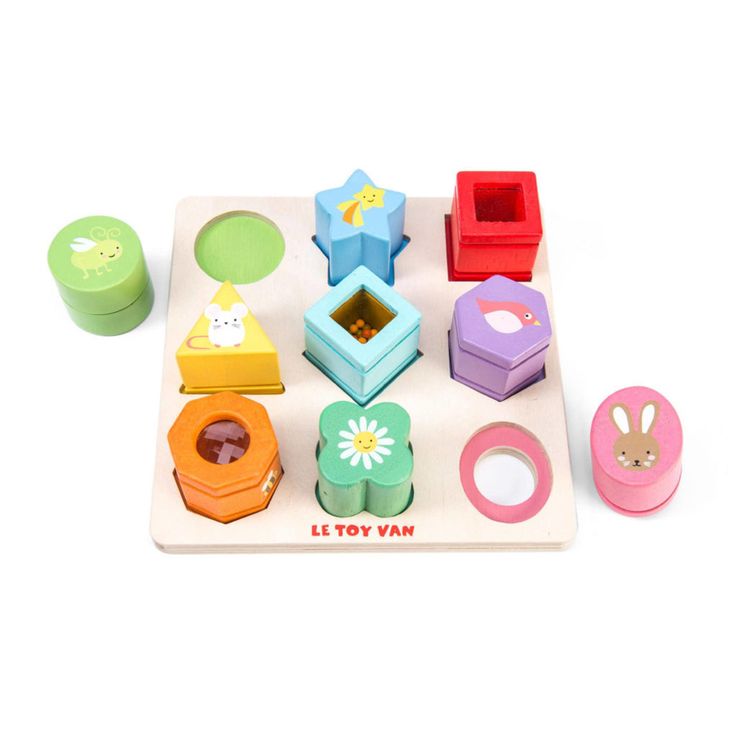 With age, the number of figures increases, new ones are added to the old ones.
With age, the number of figures increases, new ones are added to the old ones.
"With one word"
The game "geometric figures" is aimed at developing in children a generalization of the same type of figures. An adult needs to prepare circles, squares and triangles of different sizes and colors. The preschooler must distribute the presented figures into groups, regardless of color and size, call them a generalizing word, for example, all squares. Alternatively, you can complicate tasks by offering to group shapes only by color or size.
Wonder Pouch
Games like the "wonderful bag" are well known to children of kindergarten age. They are useful in that they give an idea of the contours of objects, teach examination by touch and exercise in distinguishing shapes. An adult prepares a bag with objects of various shapes, for example, a cube, a ball, a ball, a brick, a conical pyramid. The player examines them and names the shape of the toy they want to get.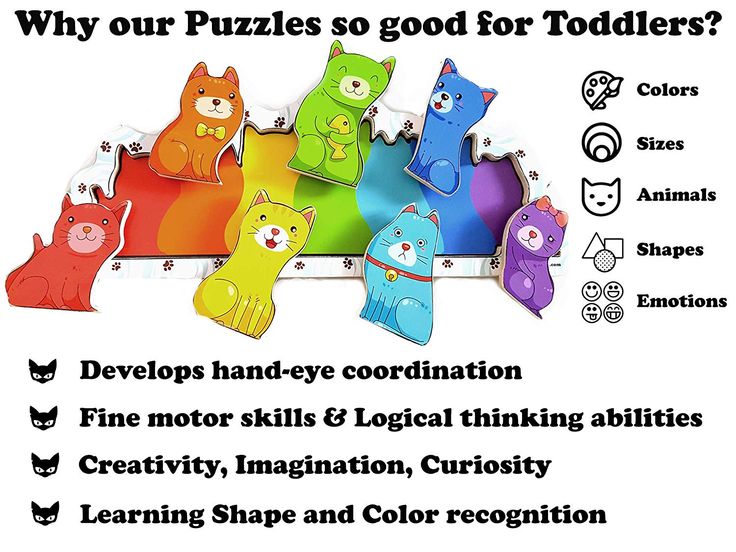 To complicate the task, older children are invited to find a specific form, for example, "Find a round toy."
To complicate the task, older children are invited to find a specific form, for example, "Find a round toy."
“Magic Glasses”
Preliminary preparation of improvised glasses made of thick paper of various shapes: round, square. The game is interesting for all the guys, it helps to expand their understanding of geometric shapes, to find objects of a certain shape in the surrounding space. For example, a child puts on round glasses and looks for everything round around him: a plate, the bottom of a vase, a ceiling lamp by a chandelier, a carpet, grandmother's glasses. For each correct match, the player is awarded a chip, and then receives an incentive prize at the end of the game.
"Patches - Patches"
For a lesson on fixing ideas about geometric shapes, you need a selection of pictures depicting various objects in which there are "holes" - unpainted places of different shapes, for example, a dress has a round hole, a boot has a square one. Among the different "patches" the child chooses the right one and connects it with the object.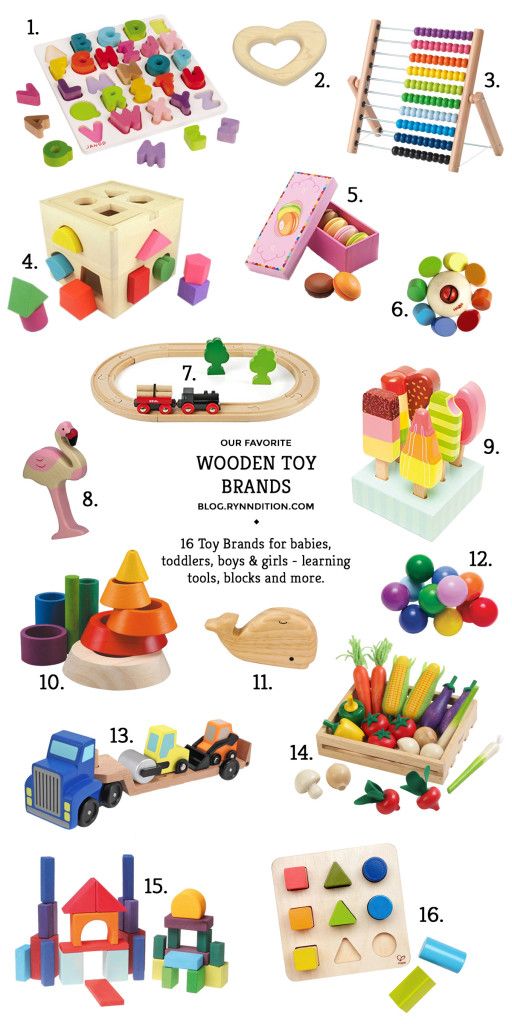 It will be interesting if an adult himself prepares images for the game, for example, cuts out things from paper (sweater, skirt, trousers, boots, hat). As a variant of the game of "patches - patches", you can purchase a didactic game of "Velcro", which are very similar in rules and content
It will be interesting if an adult himself prepares images for the game, for example, cuts out things from paper (sweater, skirt, trousers, boots, hat). As a variant of the game of "patches - patches", you can purchase a didactic game of "Velcro", which are very similar in rules and content
“What's broken”
This task will help teach children to notice what form is missing in the depicted object, develops attention. For the game, you can use pictures, appliqué from cut out parts, building material. The main thing is that the object should consist of parts of a geometric shape. For example, an adult lays out the application "house", where the details are a triangle - a roof, a rectangle - a wall, a square - a window, a small rectangle - a door, a circle - a window in the attic, a quadrangle - a pipe. The child carefully examines the image and closes his eyes, the adult removes any detail, mixing it with any others. You need to guess what broke at the house and "fix" by finding the missing part. In the future, you can complicate the task by not immediately adding a certain form or removing two forms at the same time. If this is a drawn image, then the child paints on the missing details, for example, a circle is a wheel by a car, rectangles are windows by a turret.
In the future, you can complicate the task by not immediately adding a certain form or removing two forms at the same time. If this is a drawn image, then the child paints on the missing details, for example, a circle is a wheel by a car, rectangles are windows by a turret.
"Playing with sticks"
An interesting task for middle and older preschoolers, at the same time develops motor skills and the ability to make geometric shapes. If there are no counting sticks, you can use matches or toothpicks, prepare them first, cut off the sulfuric head or sharp ends so that the baby does not get hurt. Such a task can be carried out in the form of a competition during family leisure, "who will make the figure the fastest?", "Who has the most difficult figure?". Then mark the winner with a prize. At some point, it must be a child. An adult, for example, may note his original solution or a carefully and accurately laid out figure.
"What was useful to the artist in the picture"
For older preschoolers, you can use the original task of looking at pictures, which not only reinforces the name of the figures, but also develops visual perception, the ability to see different forms in an unusual setting. An adult selects illustrations of the appropriate content, which the artist draws using geometric shapes. Then he invites the preschooler to look at the picture and find familiar shapes. If any of them are still unfamiliar to a preschool child, be sure to pay attention to them and tell what they are called, what objects are similar to them. Complicating the game, you can calculate how many geometric shapes it took to depict the picture.
An adult selects illustrations of the appropriate content, which the artist draws using geometric shapes. Then he invites the preschooler to look at the picture and find familiar shapes. If any of them are still unfamiliar to a preschool child, be sure to pay attention to them and tell what they are called, what objects are similar to them. Complicating the game, you can calculate how many geometric shapes it took to depict the picture.
"Geometric Lotto"
A classic task for introducing children to geometric shapes teaches them to compare the shape of an object with a geometric figure, to select images based on a standard. To get a competitive moment, interesting for the kids, it is better to play with the whole family. The rule is classic: on large cards - images of different shapes, for example, an oval, a circle, a triangle. The facilitator says the name of the item on a small card, for example, an apple, a cucumber, a handkerchief, a TV. Players look for the shape of the named object on their card and cover it with the corresponding picture.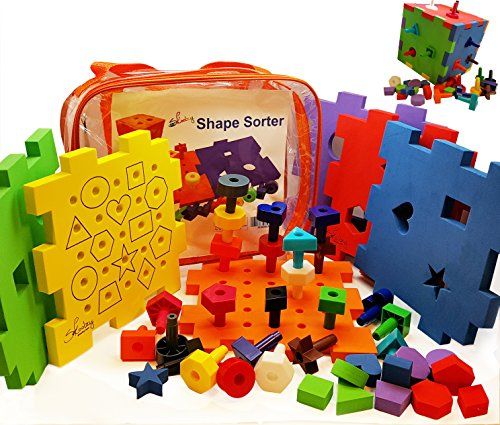 The player who quickly and correctly closes the card wins.
The player who quickly and correctly closes the card wins.
"Geometric Mosaic"
Such an educational game will help children to consolidate their ideas about geometric shapes. In addition, it will teach preschoolers to transform them, focusing on the standard (sample), will help creative imagination. The rules of the game are simple and accessible to children of any age, for older ones - the number of details increases, the plots become more complicated. Players must collect any objects from several geometric shapes. For kids, these can be houses of various sizes and configurations, cars, turrets, bridges, the sun, flowers, patterns; for older children - figurines of fairy-tale or cartoon characters, plot pictures: a vase of flowers, a street, a road, a carpet, animals, people of different professions. Be sure to note the creativity of the preschool child, to praise him. It is possible to leave the posted picture for a while to show to all relatives. The main thing is that such a developing mosaic can be purchased at a special store, or you can do it yourself like Montessori toys.
Geometric shapes
In today's article I would like to talk about how easy and fun it is to learn geometric shapes with a baby, and why bother with geometry at such an early age. What games will be interesting for a baby from 1 year old, and what materials you will need for classes - read about all this in the article. In addition, you will find some useful downloads.
Why study geometric shapes with a baby?
- The study of geometric shapes is useful for the overall development of the baby, expanding his knowledge about the world around him. If you introduce a child to forms at an early age, it will be much easier for him at school.
Geometric shapes are found everywhere, they can be seen in most of the objects around us: a round ball, a rectangular table, etc. Analyzing the similarity of surrounding objects with geometric shapes, the child wonderfully trains associative and spatial thinking.
Many interesting educational games are based on the ability to distinguish geometric shapes. This is construction, games with a sorter, a mosaic, a mathematical tablet, Gyenesh blocks, etc. Therefore, the study of forms at such an early age will contribute to the further successful development of the child.
This is construction, games with a sorter, a mosaic, a mathematical tablet, Gyenesh blocks, etc. Therefore, the study of forms at such an early age will contribute to the further successful development of the child.
So, games for learning and consolidating knowledge about geometric shapes :
1. We name geometric shapes always and everywhere
If you come across a shape while playing games or reading books, be sure to draw your baby's attention to it and name it (“Look, the ball looks like a circle, and the cube looks like a square”). Even if it seems to you that the child is still unlikely to remember the names of the figures, pronounce them anyway, and they will certainly be deposited in his head. You can do this for up to a year. At first, point only to the main shapes (square, circle, triangle), then, when you realize that the baby has mastered them, start studying other shapes.
2. Playing geometric lotto
For the first lessons with the baby, it is better to use loto, where there are only 3-4 figures. When the baby has mastered such a game well, gradually complicate the task. It is also useful for the first time to make all the pieces on the playing field of the same color and size. In this case, the child will focus on only one sign - the form, while other characteristics will neither distract nor prompt him.
When the baby has mastered such a game well, gradually complicate the task. It is also useful for the first time to make all the pieces on the playing field of the same color and size. In this case, the child will focus on only one sign - the form, while other characteristics will neither distract nor prompt him.
Both cards with the image of figures and three-dimensional figures can be placed on the playing field. Gyenes blocks are good for this purpose. , figures from a sorter, a framework insert.
Well, the most troublesome option is to purchase a ready-made loto with geometric shapes .
3. Playing with the sorter
Around the age of 1 year, the child begins to notice that the sorter figure he has chosen (Ozone ,Labyrinth , My-shop ) can not be pushed into every hole. Therefore, during the game, it is necessary to focus on this: “So, here we have a circle - it doesn’t fit here, it doesn’t fit here, but where does it fit?”.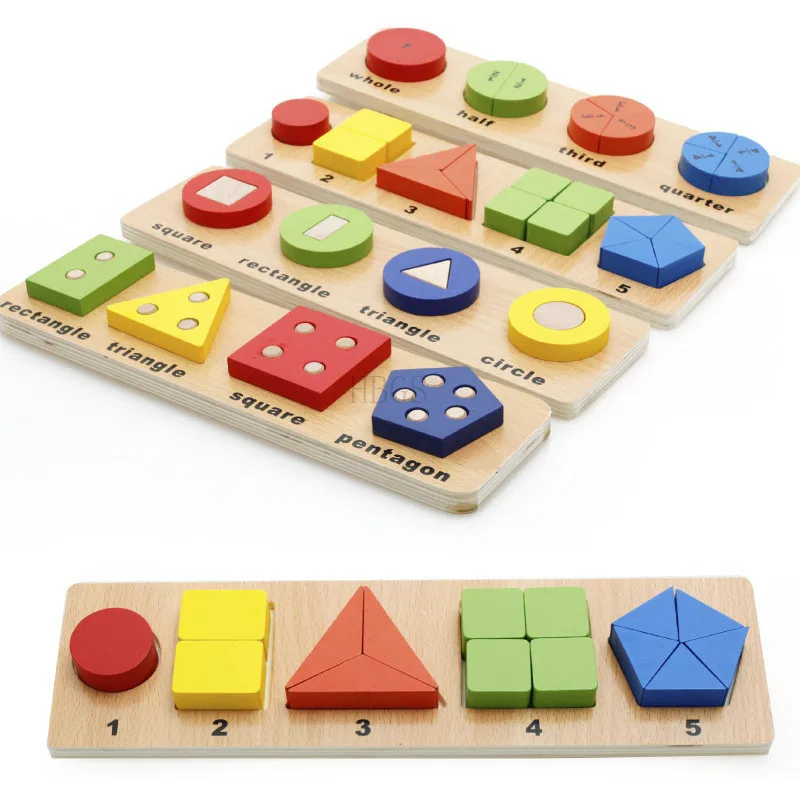 At first, turning the figure at the right angle can be difficult for the baby, but it's not scary, it's a matter of practice. Most importantly, do not forget to pronounce the names of the figures all the time during the exciting process of “pushing through”, and the child will quietly remember them all.
At first, turning the figure at the right angle can be difficult for the baby, but it's not scary, it's a matter of practice. Most importantly, do not forget to pronounce the names of the figures all the time during the exciting process of “pushing through”, and the child will quietly remember them all.
Important! When choosing a sorter, pay attention to the fact that all the main geometric shapes are presented there, and not just hearts and crescents.
4. Playing with the insert frame
You will need this insert frame , which shows all the main figures. At its core, the game is similar to a sorter.
Here is another interesting shape recognition game - "" (Labyrinth , My-shop ). Despite the fact that the age on it is 3-5 years old, it will be of interest to a child of 2 years old and even a little earlier.
9. Learn forms from Doman cards
In fact, I think that this method of studying forms is the most effective.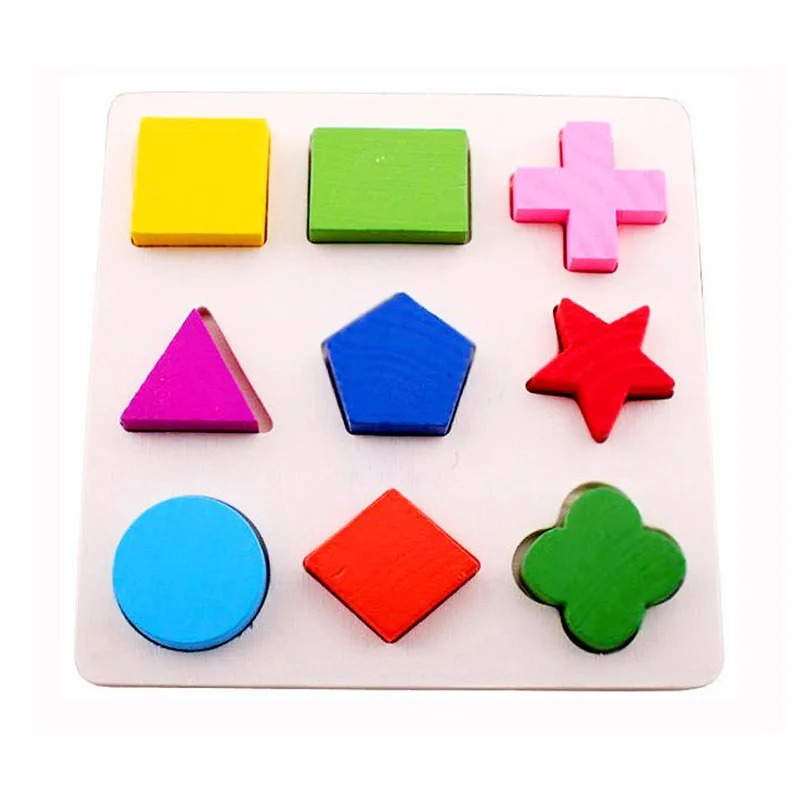 If you are doing Doman's cards, the child will remember all the figures very quickly, and you will spend a minimum of effort on this. However, it should be noted that in order for the knowledge gained from Doman's cards to be deposited in the baby's head, they need to be consolidated through other games (see above). Otherwise, the child will quickly forget everything that you showed him. Therefore, I recommend starting to look at Doman's cards with geometric shapes at about the age of 1 year, since at this time the baby becomes interested in sorters, insert frames, drawing, appliqué, etc. And, having studied the forms from the pictures, he will be able to use the knowledge gained in these games.
If you are doing Doman's cards, the child will remember all the figures very quickly, and you will spend a minimum of effort on this. However, it should be noted that in order for the knowledge gained from Doman's cards to be deposited in the baby's head, they need to be consolidated through other games (see above). Otherwise, the child will quickly forget everything that you showed him. Therefore, I recommend starting to look at Doman's cards with geometric shapes at about the age of 1 year, since at this time the baby becomes interested in sorters, insert frames, drawing, appliqué, etc. And, having studied the forms from the pictures, he will be able to use the knowledge gained in these games.
10. Watch educational cartoons
Well, of course, it doesn't hurt to watch cartoons on the theme "Geometric shapes", now you can find a lot of them on the Internet. Here are some of them:
Instead of a conclusion
Very often, the process of teaching a child geometric figures (and not only figures) is perceived by parents solely as a constant examination of the child, i.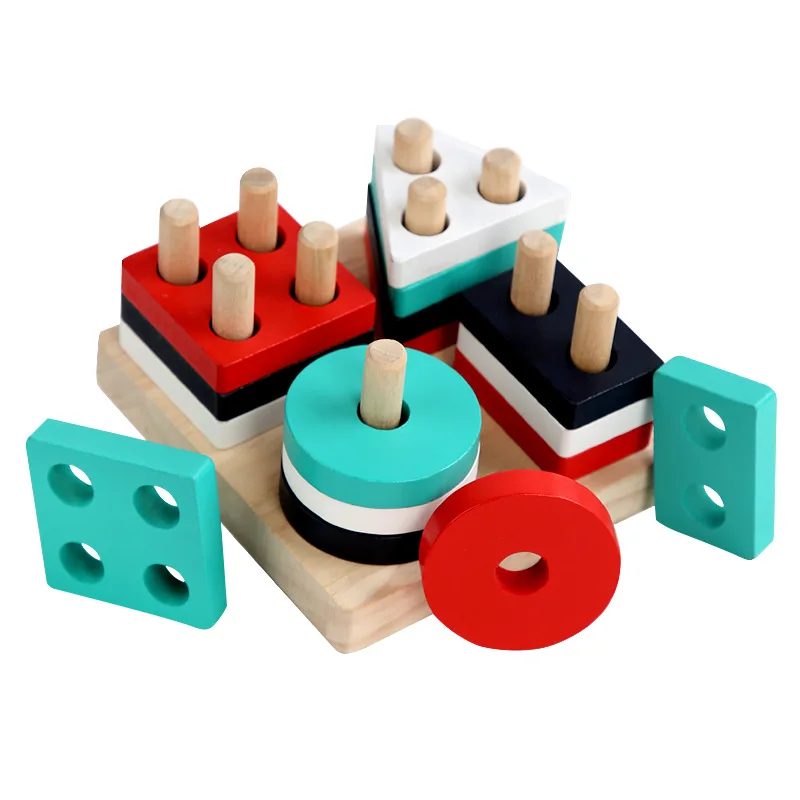 e. they show the child a couple of times, for example, a square, and in the future, the training comes down to the question “Tell me, what kind of figure is this?”. This approach is extremely wrong. Firstly, because, like any person, a child does not like it too much when they arrange a knowledge test for him, and this only discourages him from studying. Secondly, before asking a kid about something, he needs to explain and show it a lot of times!
e. they show the child a couple of times, for example, a square, and in the future, the training comes down to the question “Tell me, what kind of figure is this?”. This approach is extremely wrong. Firstly, because, like any person, a child does not like it too much when they arrange a knowledge test for him, and this only discourages him from studying. Secondly, before asking a kid about something, he needs to explain and show it a lot of times!
learning flat and three-dimensional geometric shapes
Masaru Ibuka in his book "After three it's too late" states that in the first three years of life a child has the highest potential for learning and development, so inaction is akin to a crime.
Of course, we may feel that the child is too small. And what can he learn if he cannot even speak? But the brain of a child, like a sponge, absorbs all the information around it. And it depends on the parents what the child will learn at this age.
Is it worth it to start learning geometric shapes at such an early age? Undoubtedly. The child lives in an environment of geometric shapes. The knowledge you give should not be divorced from your daily life. Mom is the guide of the baby in this world, and it is absolutely not necessary for her to have a degree in order to tell the child how the world works.
The child lives in an environment of geometric shapes. The knowledge you give should not be divorced from your daily life. Mom is the guide of the baby in this world, and it is absolutely not necessary for her to have a degree in order to tell the child how the world works.
Why should a child learn geometric shapes?
The first three years of a child's life is a period of development of brain cells, when a solid foundation for new achievements is formed. Already at 3-4 months, the baby is able to distinguish forms. This does not mean that the time has come to memorize the names of geometric shapes, but when talking with a baby, a mother may try to use the phrases: “Here is our favorite round saucer”, “Let's see what's in a square box” and the like.
Knowledge of geometric shapes helps:
- develop spatial thinking, orientation in space;
- broaden one's horizons;
- develop the ability to compare, analyze, summarize and highlight the main thing, classify;
- to replenish vocabulary.
And, of course, the knowledge acquired by a preschooler will serve him as an excellent help in studying mathematics at school.
How to teach geometric shapes with a preschooler?
- Education for preschoolers should be built in the form of an exciting game.
- No need to scold the child if he did not remember the names of the figures from 1 time, even if from 31 - it's not worth it.
- Do not forget to organically weave geometric knowledge into life: “give a square box”, “take an apple from a round plate”.
- On the way to the garden, look for rectangular or round objects, compete to find and name the most.
- In the game arsenal you should have toys of the correct geometric shape - balls, cubes, designer parts.
- Usually kids like to help their mother in the kitchen. Get round, square, rectangular molds and bake edible geometric shapes.
- It is important to use tactile memory when studying figures.
It will be much more interesting for a child not only to see, but also to feel, stroke, and maybe even lick the object of study.
- Load the child's brain in doses, gradually supplementing with information. For example, when studying shapes, repeat colors as well: “Look, what a blue oval it turned out to be.”
Basic Shape Memorization Techniques
There are many techniques and techniques that will make memorizing shapes interesting for children. The choice of methods will depend on the age and knowledge of the child.
- Before reaching the age of 1.5, we pronounce the surrounding objects aloud, supplying our story with information about the shape (let's take a round apple).
- At the age of 1.5 - 2 years, we use pictures, color the figures, use sorters to study the figures. We start with the simplest - the circle. We will connect the rest of the figures only after the child has learned the concept of "circle".
- From the age of 2 until reaching school age, we can apply all existing methods, following from simple to complex.
When studying geometric figures, it is important to proceed in stages. You should start with light shapes: circle, square, triangle, rhombus, rectangle, oval. Knowledge of these figures is available for children 2-3 years old.
Older children, 4-5 years old, include in their vocabulary and use the idea of a trapezoid, parallelogram, pentagon, hexagon, octagon, decagon and other polygons. They already know how to analyze, so they can easily compare and find differences between figures.
Senior preschool children get acquainted with three-dimensional figures: cylinder, pyramid, cube, ball, cone, prism.
Let's analyze some variants of techniques for studying geometric shapes:
1. Sorter – looking for a "house" for each shape. The child will not only remember the figures, but will also develop fine motor skills, coupled with thinking.
2. Modeling . Sculpt geometric shapes with your baby - you simply can’t imagine a better activity for developing fine motor skills of hands and perseverance.
3. Three-dimensional stickers and magnets depicting geometric shapes can also help the child fix the names of the shapes in memory.
4. Looking for halves of . Cut the geometric shapes into two parts, mix and invite the baby to find the other half.
5. Applications . You can also make a geometric application from cut out figures. For example, a house (square + triangle), Christmas tree, car.
6. Stroke dotted geometric shapes .
7. Color or shade the geometric shapes you suggested .
7. Finish the figure according to the sample.
8. Draw figures using stencils.
9. Listen to a fairy tale where the main characters are geometric figures, and then draw what you hear.
10. Put figures of different shapes into an opaque bag and suggest guessing the shape of the object by touch.
11. An excellent game for the development of memory and attentiveness. An adult prepares cut out figures of different colors and sizes and lays them out in front of the baby. They discuss colors, name the figures, and then the adult hides the figure. The task of the child is to find and name which figure is not.
12. Laying out geometric figures with counting sticks or matches. When the child masters this skill, you can move on to a more difficult level - solve puzzles. For example, remove one match to make a triangle.
13. Associations . Invite the child to name objects that a circle or rectangle looks like.
14. Laces and various insert frames , for example, Nikitin squares, where you need to recreate a square from several objects, or Segen boards, where you need to insert the missing part.
15. Outdoor games . For example, an oval, a triangle, a square, a rectangle are drawn on the asphalt. At the command of an adult, the child must find the named figure and stand in it.
16. Videos . There are a large number of cartoons and educational materials about geometric shapes. Watch the video with the baby and be sure to discuss what you see.
17. Find on the Internet and print out pictures that artists draw with geometric shapes, and invite your child to count how many circles, rectangles, etc. are there. objects (for example, ball = ball). And, of course, to involve the study of the subject through games:
- Finding a three-dimensional figure from a flat pattern is an excellent exercise for developing spatial thinking.
- "Sleuth". Children are given an “orientation” - a flat drawing of the desired figure from all sides. Children need to match the pictures and find the right shape.
- Create a 3D model yourself. An adult can print stencils from the Internet. It remains for the child to bend along the lines and glue to make a figure.
- Models, origami - you can try with your child to create your own voluminous paper toy.
Learn more

